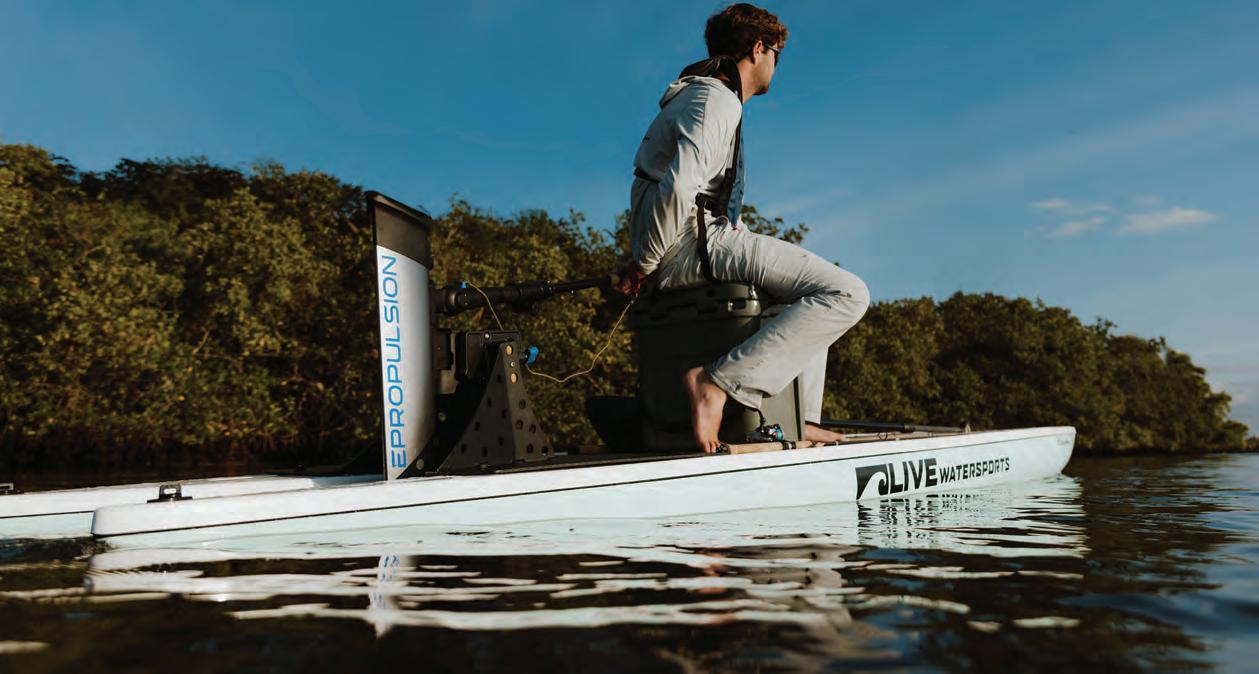








You’re looking at it! Furuno’s award-winning Radar gives you clarity & target separation like no one else. Don’t take our word for it. See for yourself. Scan here, and we’ll show you!





















You’re looking at it! Furuno’s award-winning Radar gives you clarity & target separation like no one else. Don’t take our word for it. See for yourself. Scan here, and we’ll show you!











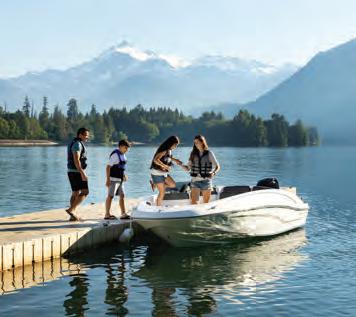






Embarking on the open water is an exhilarating experience, flled with the promise of adventure and relaxation. Whether you’re a seasoned sailor or a weekend cruiser, protecting your vessel with proper insurance is not just a choice—it’s a necessity. Explore the reasons why every boat owner should prioritize boat insurance for a worry-free voyage.
The open water can be unpredictable, with unexpected storms, collisions, or other potential accidents. Boat insurance can give you fnancial protection if there is damage to your vessel, providing coverage for repairs or replacement.
Accidents on the water can result in damage to other boats, docks, or even injuries to passengers. Boat insurance offers liability coverage, which can pay for damages or injuries you’re liable for while boating, up to specifed limits, and lawsuit costs if you’re sued. This includes damage you cause to another watercraft or if someone on or near your boat is injured and you’re found to be legally responsible.
Unfortunately, boat theft and vandalism are realities that boat owners face. Boat insurance has comprehensive and collision coverage that can protect you against events outside of your control, including theft and vandalism.
Accidents on the water may lead to injuries for you or your passengers. Boat insurance offers a range of optional medical payments coverage limits, helping to cover medical expenses if you are in an accident or someone is hurt on your boat, regardless of fault.
If you fnanced the purchase of your boat, most lenders require insurance coverage to protect their investment. Having boat insurance not only fulflls these requirements but also gives you peace of mind knowing that your fnancial interests are safeguarded.


Some water municipalities and marinas may require proof of insurance for docking or accessing certain areas. Boat insurance allows you the fexibility to explore different destinations without worrying about entry restrictions.
Emergency towing and assistance
Progressive boat insurance can include optional Sign & Glide® On-Water Towing coverage. If your boat is disabled or breaks down on the water, Sign & Glide® pays for on-water towing, jump starts, soft un-groundings, and fuel delivery.
Wreckage removal
If your boat sinks, Progressive boat insurance will cover the cost of removing your boat from the water (if removal is legally required).
Investing in boat insurance is not just about protecting a valuable asset; it’s about safeguarding the memories, experiences, and joy that come with your on-water adventures. Don’t let unforeseen circumstances disrupt your journey—navigate with confdence, knowing that Progressive boat insurance has you covered. Ensure a smooth and worry-free voyage, because when it comes to your boat, peace of mind is the ultimate luxury.
Scan to get a quote in as little as 4 minutes
learn more.




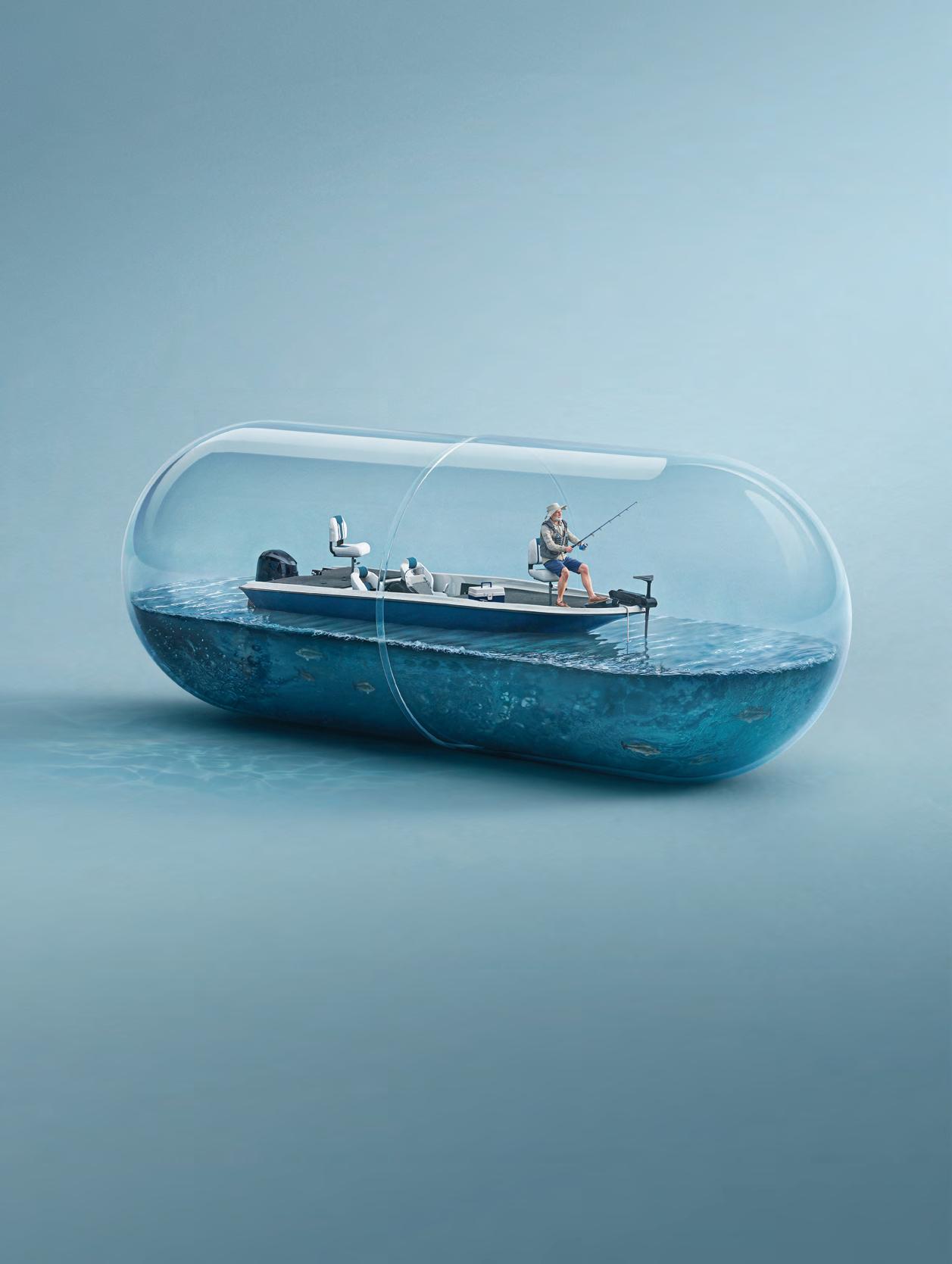
















Nestled in the scenic Blue Ridge Mountains of North Georgia against a backdrop of forests and river banks, the bustling Bavarian alpine village of Helen o!ers a wealth of shing opportunities for anglers of all skill levels.
By Unicoi Out tters
Trout shing is a highlight in the Helen area, with rainbow, brown, and brook trout abundant in local waters. Anglers can explore various shing experiences:
• High-Elevation Wild Trout: Tackle small creek wild trout in the serene mountain streams.
• Stocked Streams: Fish in streams replenished by the Georgia Wildlife Resources Division, o!ering both catch-and-keep and catch-andrelease options.
• Smithgall Woods State Park: Reserve a spot to pursue trophy trout in this pristine park.
• Private Water Access: Book guided or unguided trips on exclusive sections of the Chattahoochee and Soque Rivers.
#e optimal trout shing seasons are spring (March-May) and fall (October-November), with cooler water temperatures and comfortable
air conditions. Winter shing is also rewarding for those prepared for colder conditions.
For bass enthusiasts, the Helen area o!ers diverse shing experiences:
• River Fishing: Target native shoal bass, spotted bass, redbreast sun sh, and bluegill in the Chattahoochee and Chestatee rivers.
• Lake Fishing: Explore lakes like Burton, Seed, Rabun, Chatuge, and Lanier for largemouth bass, spotted bass, and sun sh species.
#e Helen, GA region is also home to three species of native redeye bass: Chattahoochee, Bartram’s, and Coosa bass. #ese colorful and spirited sh are best targeted from April to September. Anglers can pursue these species as part of the Georgia Bass Slam.
And, worth noting, Helen is an excellent destination for family shing adventures:
• Unicoi State Park: O!ers opportunities for

kids to trout sh in Smith Creek, bream sh in the lake, and enjoy activities like hiking to Anna Ruby Falls, zip-lining, kayaking, paddle-boating, and archery.
• Lake Burton Trout Hatchery: A short drive from Helen, this hatchery allows visitors to sh for stocked trout at Moccasin Creek State Park, explore wild trout streams upstream, bream sh at the lake shoreline, and hike to Hemlock Falls.
Whether you’re an experienced angler or a beginner, Helen, GA o!ers a diverse range of shing experiences and is a worthy destination to add to your bucket list.
Unicoi Out tters, established in 1994, is the Helen, Ga area’s premier y shop and guide service, providing expert guidance and quality gear to enhance your shing experience. Visit unicoiout tters.com to learn more about available trips, gear, and to book your next shing excursion. To learn more about Helen, GA, visit helenga.org.

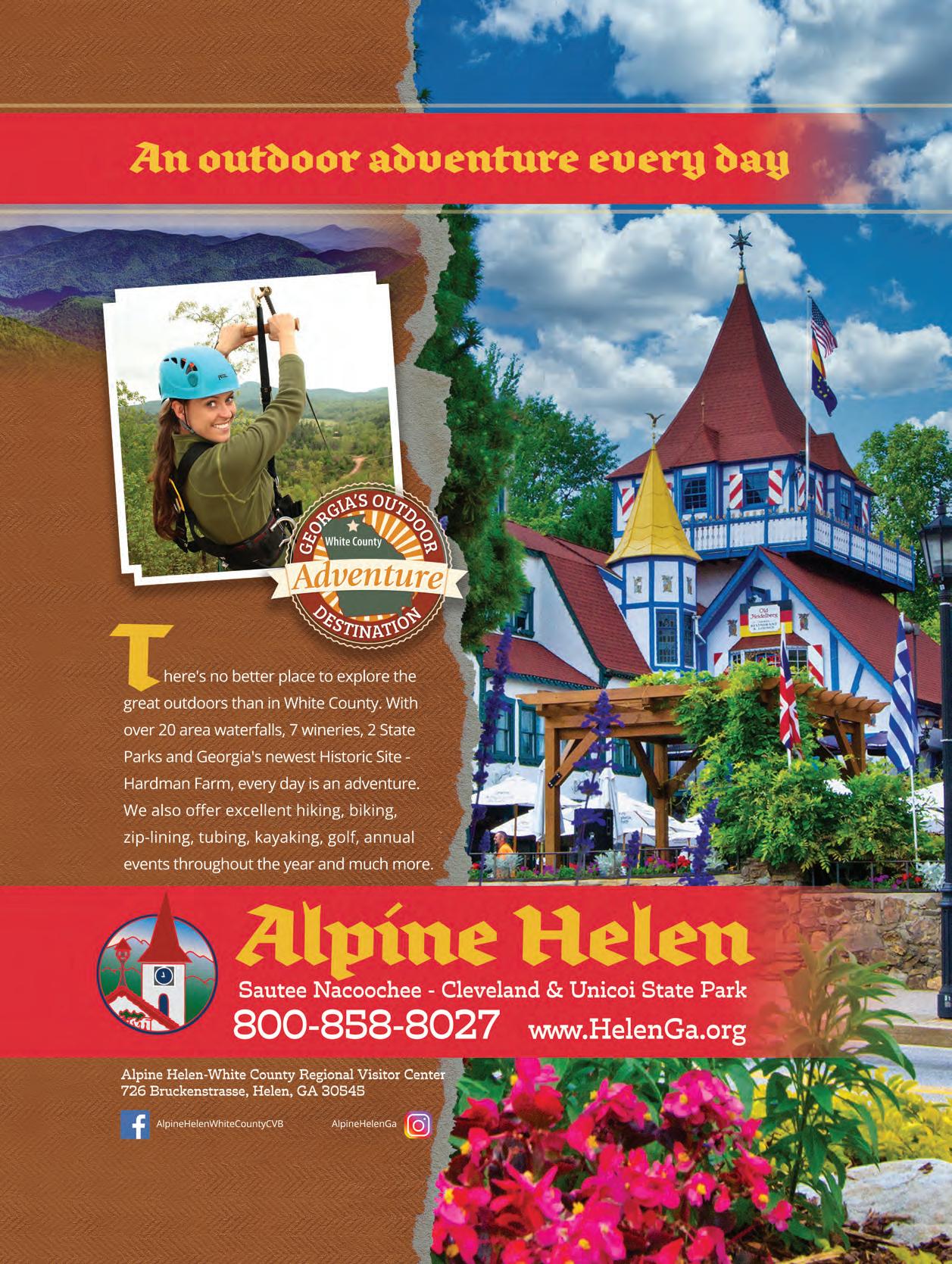




By Ben Martin, Editor in Chief

Chimney Rock Village, North Carolina was decimated by last year’s rare hurricane surge in the Rocky Broad River. Decimated. All ve of the village’s bridges, 30 percent of the small businesses, most of Main Street to Bat Cave, the village’s two campgrounds, over 35 RVs, and over 30 homes were washed away. With only one road in or out of Chimney Rock, no power, no public services and winter coming on, this little mountain village of 125 residents banded together to help each other. #ey immediately rolled up their sleeves and began the process of survival and renewal.
Always one of this writer’s favorite trout streams, Chimney Rock Village and it’s meandering Rocky Broad River was an annual sojourn for me and many anglers throughout the country.
I recently visited Chimney Rock and had the opportunity (privilege) to speak with the town’s mayor, Peter O’Leary, about the village’s reconstruction e!ort and how truly self-reliant these mountain folk are. According to Mr. O’Leary, volunteer groups like Spokes of Hope and the 101st Airborne showed up with much needed supplies and the Chimney Rock community, along with the volunteers, began the process of moving forward; volunteers like Shane Zoccole, Barbara Meliski, Joe from Wyoming, the whole Spokes of Hope crew immediately started pitching in.
#e river has taken a somewhat di!erent route through Chimney Rock. Some say its course now resembles its course from the mid 1800s when residents rst began settling the Hickory Nut Gorge. Today, crews are hard at work everywhere you look, roads are in and the future looks bright for a return to a new form of reality for both the residents as well as visitors. And while the course of the river has morphed, the sh haven’t gone anywhere, and while the riverfront buildings will invariably change, the beauty of the

mountains and the serenity and superior trout shing of the Rocky Broad River, along with the spirit of the residents will likely never be diminished. For that we wholeheartedly embrace the moniker of “Mountain Strong” for everyone involved in this heartfelt e!ort to reclaim and restore this beautiful mountain village.
Whether you’re chasing trophy fish or charting your next offshore course, your time on the water deserves the best in navigation and marine technology. Defender brings you UNBEATABLE PRICES and EXPERT SUPPORT on Lowrance and Simrad electronics—trusted by professionals and weekend warriors alike.

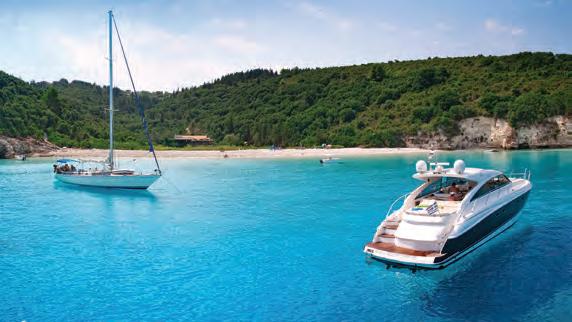
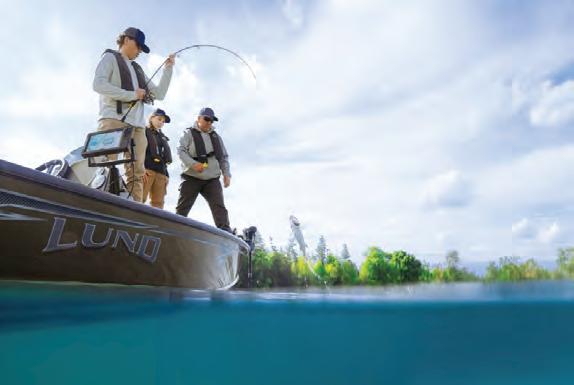




during the initial feeding frenzy.
If you have outriggers, trolling 4 lines is pretty straightforward. If your riggers have dual clips, the highest set clip will hold your longer lines. If you only have single clips, use them for longer lines with rigged ballyhoo, and run two chuggers from the gunnels, set closer to the boat.
If you dont have outriggers, you can use shorter rods or bent-butts for short lines near the back of the boat, and run two longer lines from taller trolling rods, set behind them midship, or just keep it simple and run two or three lines. #e most important rule of setting a spread is that lures that dive deeper should be set as shorter lines, running closest to the boat, while lures that skip the surface will be your longest set lines. #is gives you the ability to turn the boat without risking tangles. If your short chuggers are exactly the same, they can be run at identical lengths, otherwise, stagger them appropriately according to their weight and depth they run through the water.

By Capt. Quinlyn Haddon
or new boat owners with a vessel and captain capable of getting o!shore, targeting mahi is a great choice for rst-timers who are wanting to push into the o!shore shery.
Mahi shing doesn’t require any predetermined coordinates, and anyone can head out there and nd them. Depending on your location and time of year, you can start looking for signs of life as shallow as 100’. #is time of year in the Florida Keys, you may have your best luck past 500’.
As you make your way o!shore, your hunt begins immediately. Your head should be on a swivel, scouring near and far for the telltale signs of mahi activity. Current edges, weedlines, debris, baitsprays, and diving birds found within the
desired depths, are all worth checking out.
When you have found one of these potential mahi zones, you will initially troll the area, and then move into casting at the school once you have hooked up to a sh.
Depending on your boat’s set-up, you can get the job done trolling 2-5 lines. It really isn’t necessary to go overboard with a mahi spread as they have a tendency to tangle lines, and a majority of your catching will be done a$er you have hooked up to a single sh. Once you have hooked up on the troll, you will have to clear all the other lines to prepare for casting at the school. If you have too many lines to clear, you may miss your opportunity for multiple hookups
If you want to run a $h line down the center, you can choose a long line that increases your chances of catching tuna. #is rod should be placed up high on the center of the boat in the rocket launcher and should have a very light lure that skips the surface. Alternatively, you can run it short from the transom, with a lure that dives deeper and increase your chances of catching wahoo.
If you opt for the short $h line, be aware that running anything with treble hooks is not recommended for targeting mahi. Not only do ip like rabid snakes when in the boat, but as they jump and shake when hooked, they can send that lure %ying back at you if they are successful in freeing themselves. Choose a wahoo lure with single hooks if you are running this type of spread.
If you go with a long line as your $h line, be mindful that you will likely catch more weeds this way. #is is a better option in open water while trolling under birds rather than weedlines. It also makes cult to make tighter maneuvers. Always make wide turns, and speed up through them to keep the lines tight and maintaining the lure’s action.
Once you’ve hooked into a mahi, slow the boat but keep it in gear while you clear the other trolling lines. Bring the hooked sh close to the boat, but leave it swimming in the water as it will act like a chumbag to bring his buddies up to casting range. Grab your spinning rods with 50-80# leader and an 8/0 j hook, toss on a live or chunk of bait and cast out behind the hooked sh. Let back, occasionally stopping the line with your nger and giving it a little twitch and then continuing to free-line it back. When you get a bite, give the sh a few seconds to eat awnd then close your bail and reel. Once you have all your rods hooked up with sh, start taking them into the boat one at a time and casting back into the school, holding multiple hooked sh in the water as you start rotating them out.
If you aren’t quite ready to go solo yet, give Sweet E’nuf Charters a call to book a mahi catching trip and we’ll teach you everything you need to know to make the mahi fear you.
Happy hunting!
Capt. Quinlyn Haddon guides with Sweet E’Nuf Charters out of Marathon, e Florida Keys. (504) 920-6342. www.captainquinlyn.com; IG: @captainquinlyn
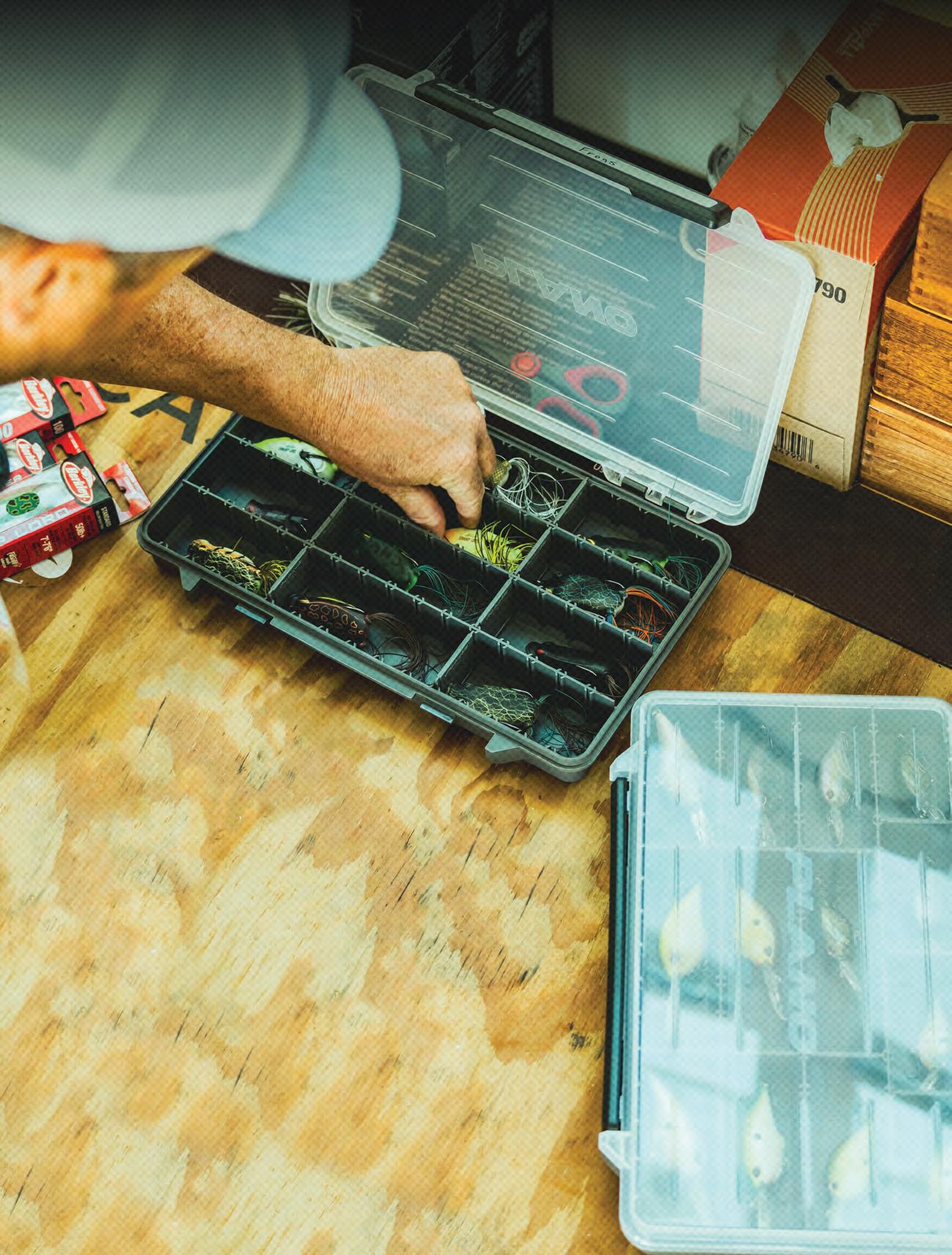
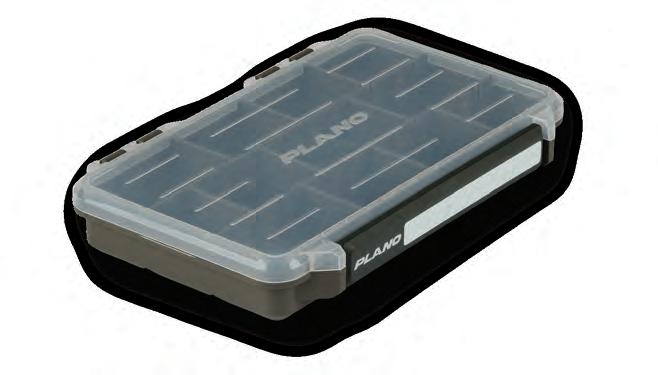
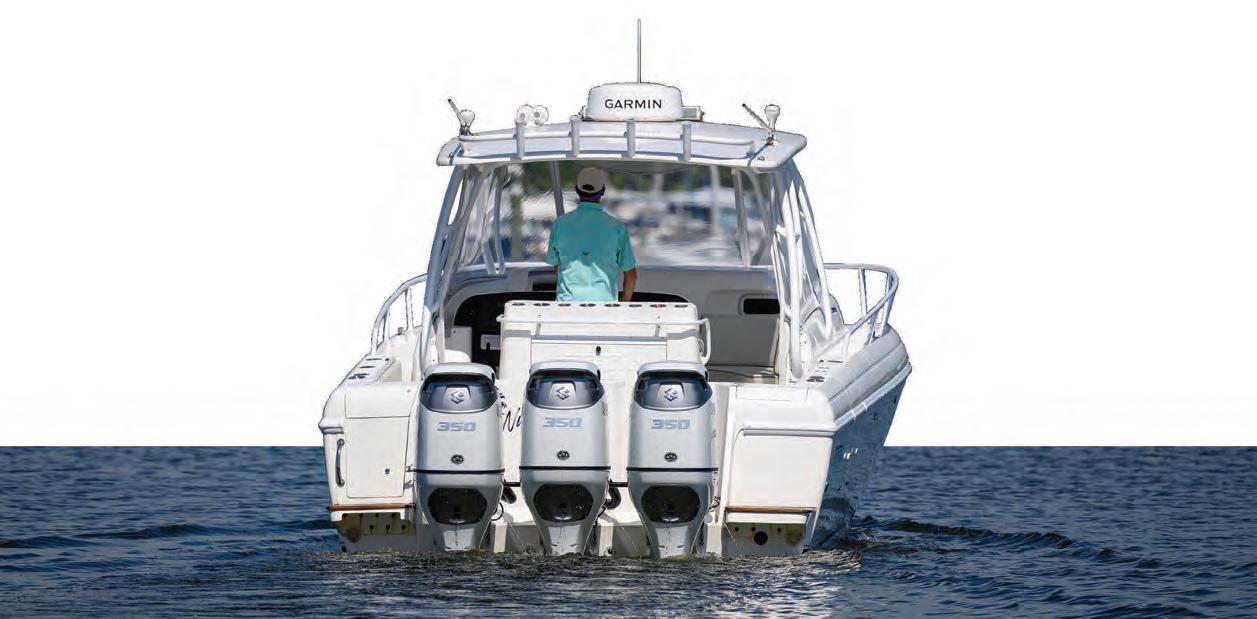









It’s no fsh tale when you run with a John Deere. You can get everything done faster and easier, so you get more time on the water. Plus, our special offers make them the catch of the day.




The National Oceanic and Atmospheric Administration (NOAA) Fisheries has announced a short recreational season of just two days for 2025 for red snapper in the South Atlantic. Red snapper harvest will be open for recreational anglers in the South Atlantic, from North Carolina through Florida, July 11 and 12. !e limit is one sh per angler.
Dates are subject to change in case a small cra weather advisory is projected. Any change in the date of the recreational season will be announced in the Federal Register, Fishery Bulletin, and an announcement via NOAA Weather Radio.
NOAA Fisheries also withdrew the proposed bottom shing closure from Amendment 59 to the Fishery Management Plan for the SnapperGrouper Fishery of the South Atlantic.
Amendment 59, introduced in January of this year, proposed a 3-month bottom shing closure for 55 species of reef sh in Northeast and Central Florida each year. Comprising federal waters from the Florida/Georgia border to Southern Brevard County, the closure would have had devastating

impacts on the sport shing industry and coastal communities that rely on angling tourism dollars.
!e American Sport shing Association (ASA) applauds the elimination of the proposed closure. “We are encouraged to see NOAA reconsider and withdraw the $awed bottom shing closure,” said Martha Guyas, Southeast Fisheries Policy Director for ASA. “With more than 5 million anglers taking to the water each year in our state, recreational shing contributes $11.1 billion to the Florida economy and supports more than 70,000 jobs. !is haphazard proposal would have gutted the industry without any sound scienti c justi cation.”
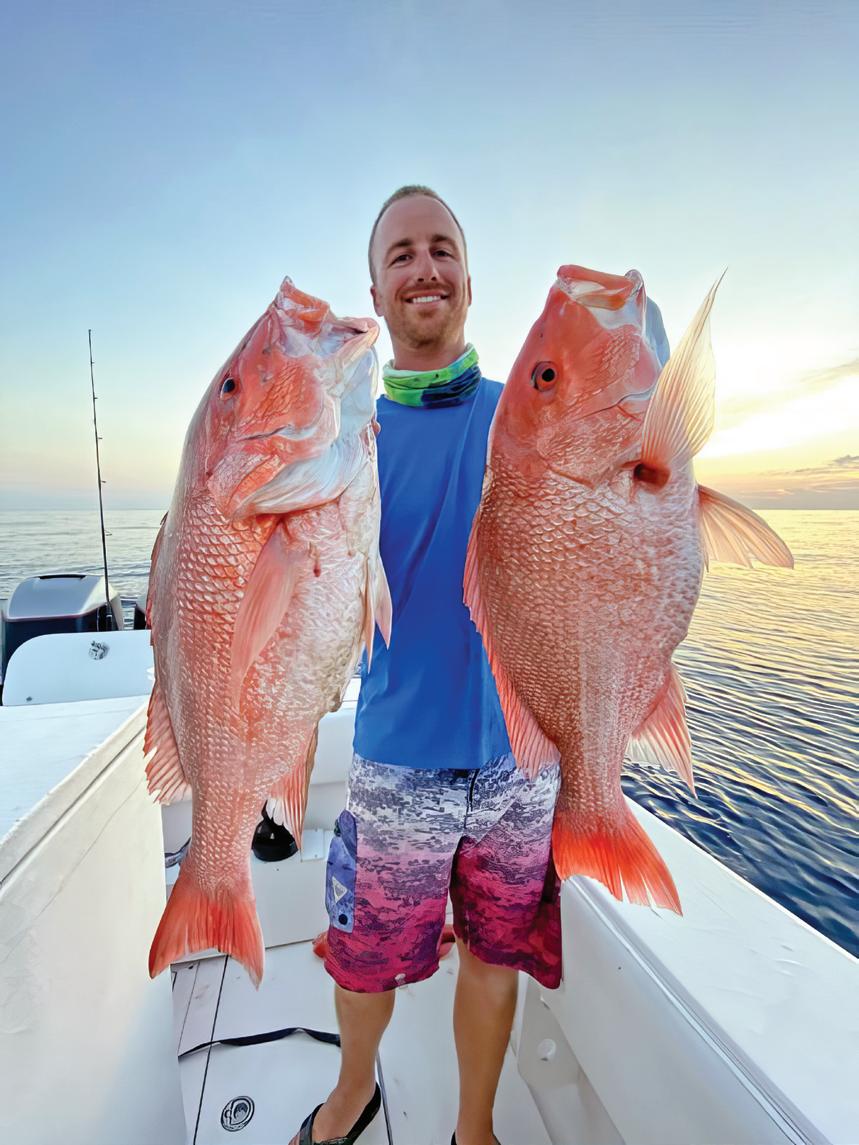
Moving forward, continued e orts to improve data collection and management are necessary to assist in providing more reasonable access. !e South Atlantic Great Red Snapper Count is underway and is expected to be completed later this summer.
ASA led a joint letter earlier this year in which 76 members of the recreational shing industry from dozens of states expressed their opposition to the area closures included in the Amendment. NOAA Fisheries also held multiple in-person hearings and received extensive comments during the public comment period, most of which opposed all or part of the proposal.
Unfortunately, Amendment 59 still maintains an unacceptably short recreational season of just two days for 2025. Although there was widespread grumbling and gnashing of teeth by recreational anglers, it did not come as a surprise to pretty much anyone.


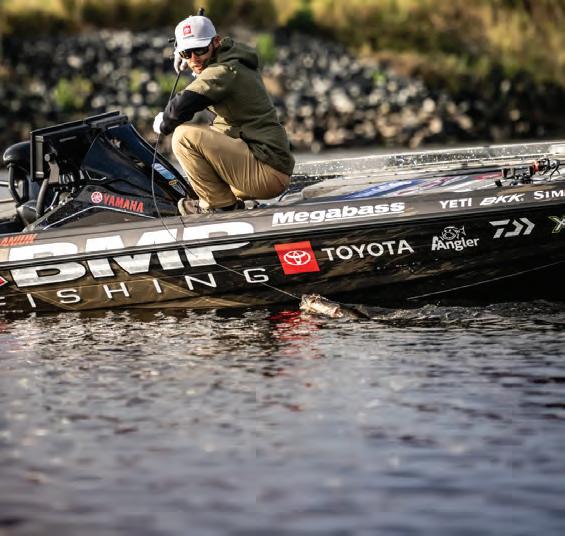
By Don Norton
If you’ve never been to Lake Okeechobee, it’s like shing in an ocean. With a surface area of 730 square miles, 135 miles of shoreline, and a length of 35 miles, it can be a bit humbling even to the top professionals who sh tournaments there. Hot spots abound. At one time or another, throughout the calendar year, virtually everywhere on the lake is a good shing area.
!e lake’s water levels uctuate 3-5 feet per year. !e normal water level in the winter ranges from 14 to 16 feet above sea level, and the normal water level in the summer months ranges from 12 to 15 feet.
As I write this article in mid-May, the water level is 11.17 feet above sea
level, unusually low for this time of year, creating many navigational hazards. It is expected to go even lower before the rainy season hits South Florida. What’s a sherman to do? !e lake becomes dangerous at this depth, and many of the best spots can be hard to get to.
Like many other anglers, I found the answer years ago.
!e Kissimmee River originally owed over 100 miles from Lake Kissimmee to Lake Okeechobee. !e waterway, part of the Everglades headwaters, was straightened and channelized into a 56-mile-long canal called the C-38 Canal in the 1960s for ood control. Restoration e$orts are underway to restore the river to its original meandering state and revitalize the ecosystem. !e depth of the river as it enters Lake Okeechobee ranges between 25 and 30 feet deep, o$ering an excellent opportunity for anglers to catch bass, crappies and bluegills. Other parts of the river can be as deep as 45 feet.
But it o$ers some excellent bass shing. Just ask Greg DiPalma, Brandon Palaniuk, Will Davis Jr., or Timothy Dube, four professionals who shed the 2025 BassMaster Elite Tournament on Lake Okeechobee earlier this year.
On Day One, shing in a small stretch of the C-41A Canal that ows southeast from Lake Istokpoga, DiPalma weighed in 29.12, Davis Jr., 26.2, Palaniuk 23.7, and Dube had 23.7. !e foursome was in rst, second, third, and 10th, respectively.
On Day Two, Palaniuk put two 8-pounders in the boat on consecutive casts, weighing in 34.10 for the day. He went on to win the tournament with a staggering 95.4 pounds, all caught in the Kissimmee River.
!is wasn’t the rst time an Elite series tournament on Lake Okeechobee was won on the Kissimmee River. Tyler Rivet won the event in 2023 a er nding an underutilized area of hard bottom spots, similar to the area Palaniuk and the others shed.
As Buck Perry used to say, “!e Home of the bass is deep water.” More and more anglers are proving that to be true.
Most of the locals will tell you, don’t overlook the river. As good as Lake Okeechobee is, the key in low water conditions, as well as other times of the year, is the Kissimmee River.
Don Norton is Co-Publisher of Coastal Angler Magazine’s Okeechobee edition. Contact him at (863) 273-4998 or don@theanglermagazine.com.
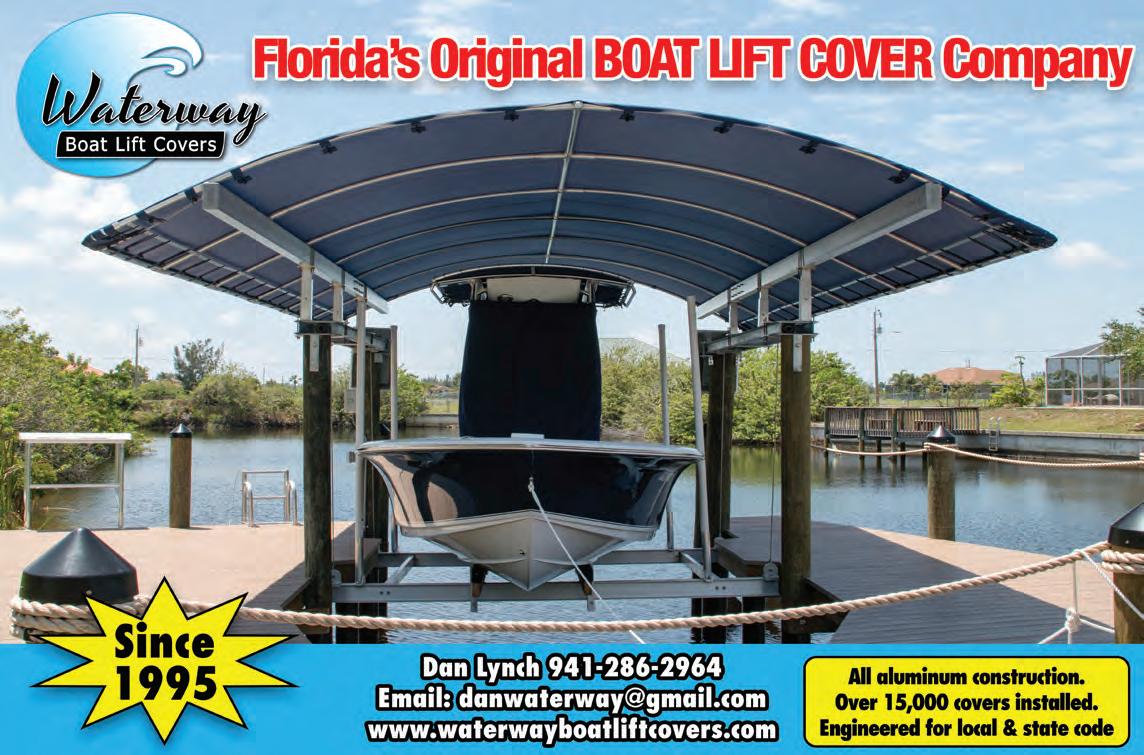


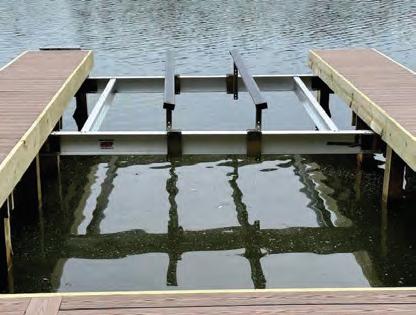
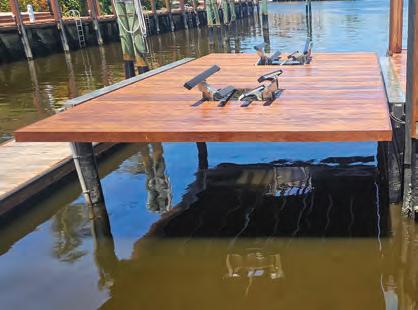
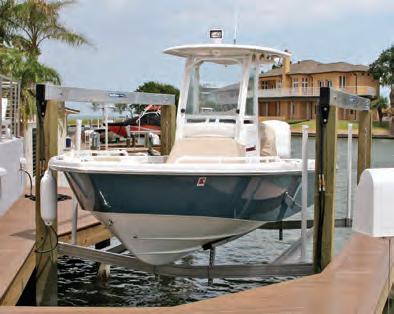


ShoreStation hydraulic boat lifts are a reliable choice for coastal residents and boating enthusiasts alike. Their strong construction, made with corrosion-resistant materials, allows them to withstand harsh environmental conditions, including sun, storms, and saltwater damage. ShoreStation provides a steadfast solution for protecting waterfront investments, o ering peace of mind to owners in the Sunshine State.
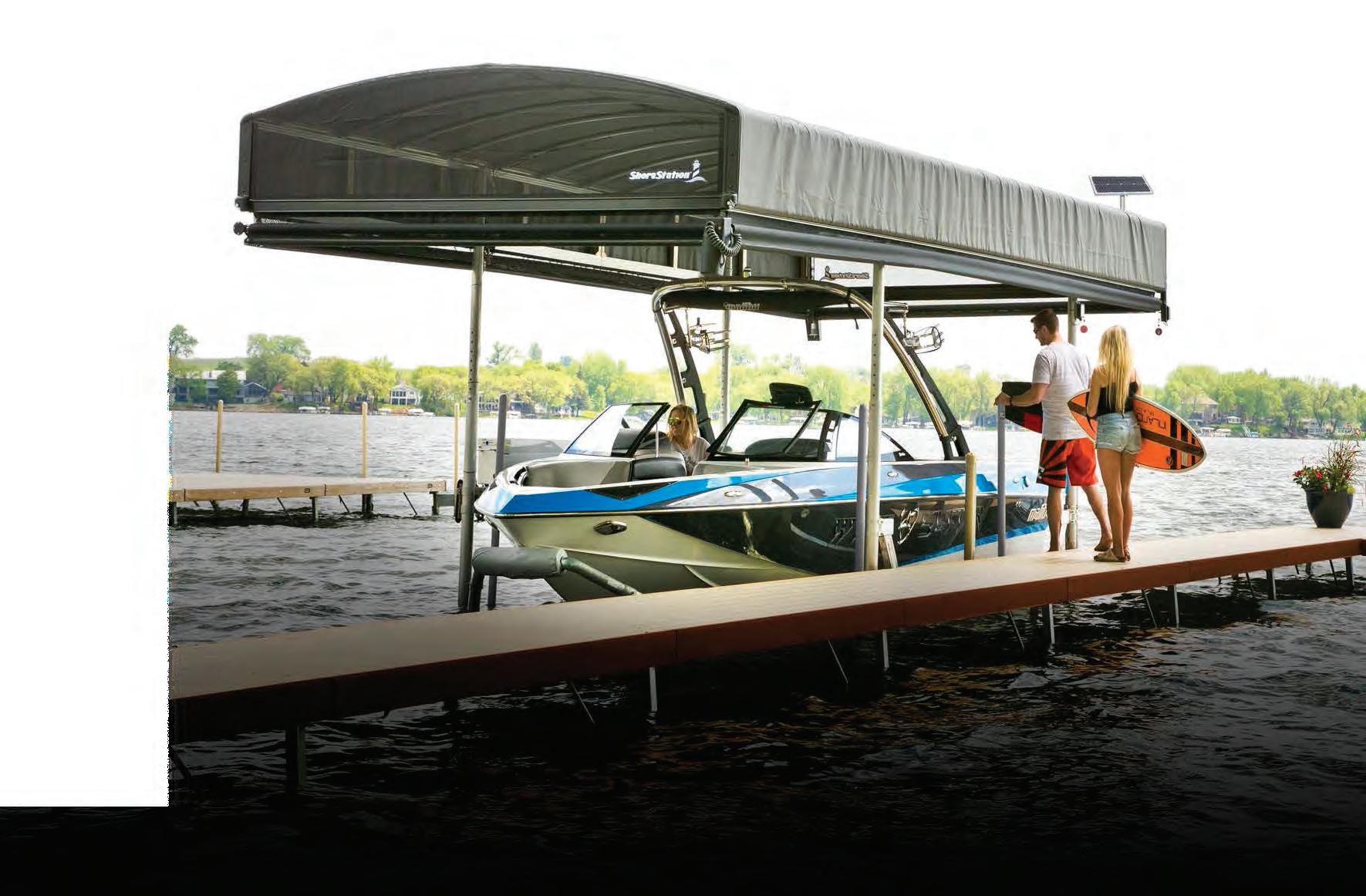

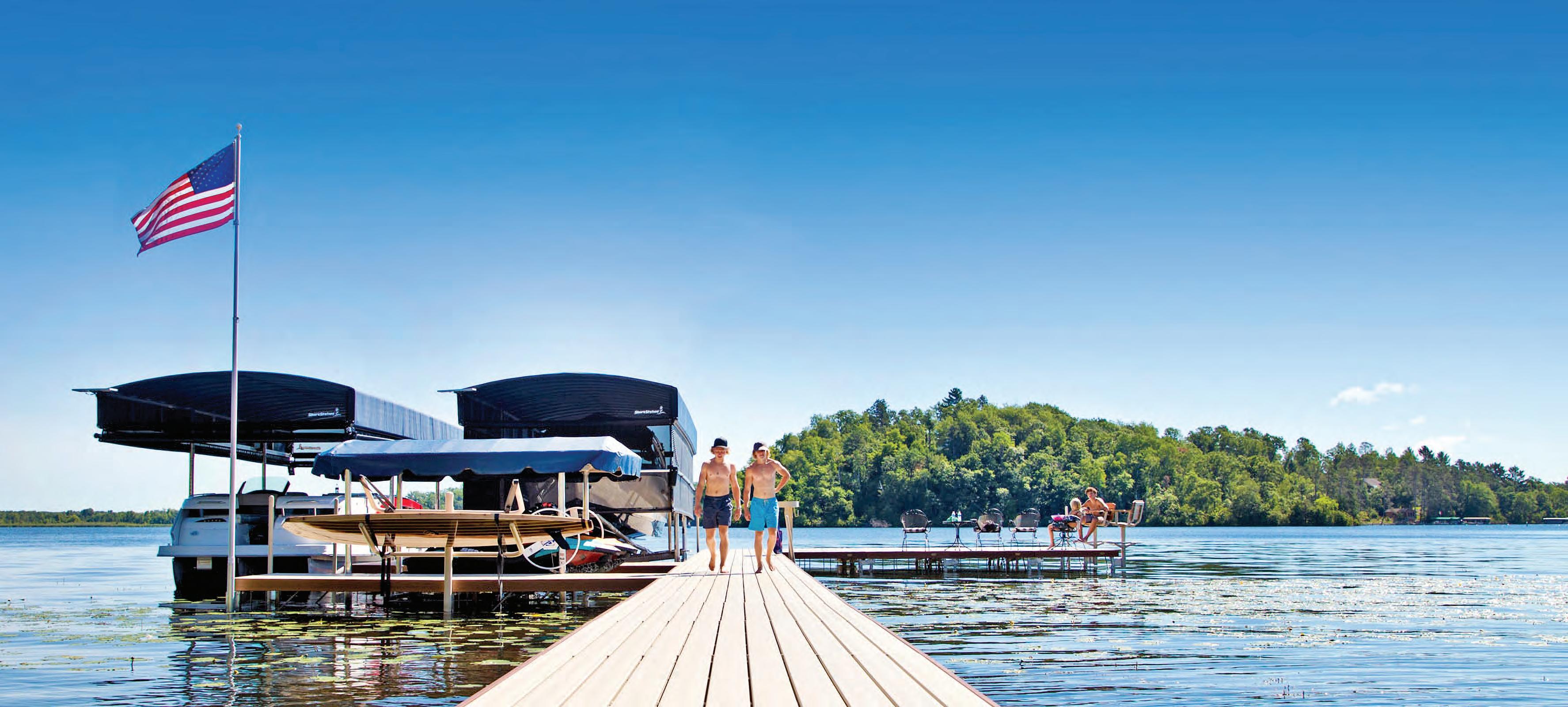



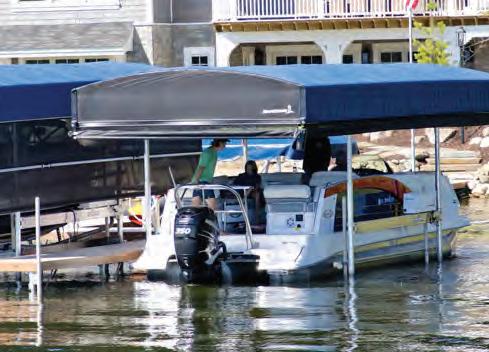
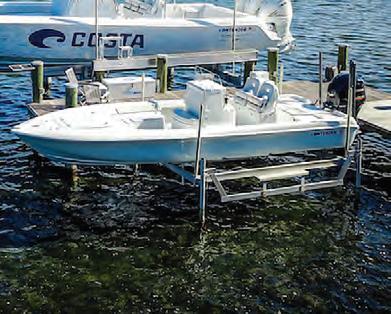
Equipped with exceptional weather resistant fabric and breathable SunTex 80 woven mesh ends for maximum protection and durability,

Made from the highest quality materials, our innovative hydraulic boat lift is one of the fastest and safest lifts on the market today. When you have a hydraulic lift, there’s no need to worry about wind and waves getting in your way. This lift will give you con dence to safely land and secure your boat in less-than-ideal conditions.
Never miss another moment on the water. Power your lift with clean, free solar power. Our speedy 20 watt charger features solar regulator drainage protection, saving your battery from permanent damage caused by overcharging.



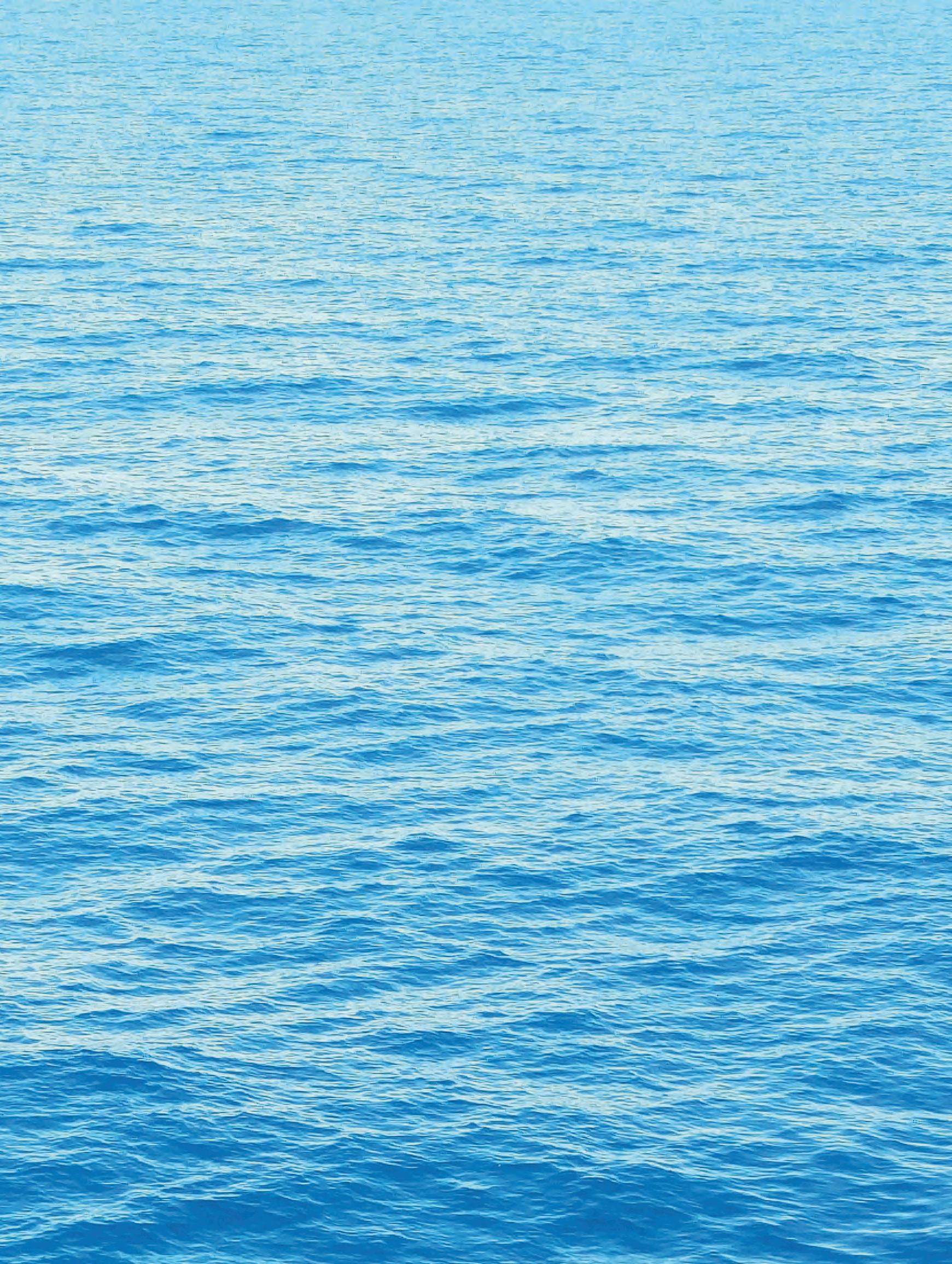


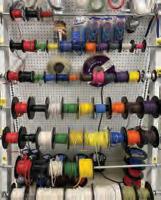








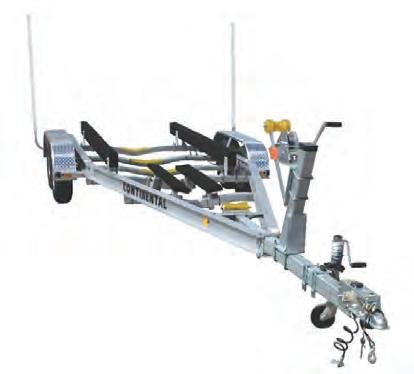










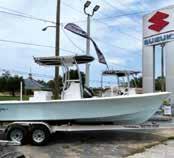





Suzuki Marine USA has announced that its re-launched V6 200HP 4-stroke outboard motor has earned a 2025 Top Products Award from Boating Industry Magazine Boating Industry unveiled its 2025 Award Winners to the world’s recreational boating industry in May and will feature all the winning products in an upcoming issue of the popular magazine.
“On behalf of Suzuki Marine USA and the Suzuki factory in Japan, we are grateful for this recognition from Boating Industry,” said Brandon Cerka, Vice President Sales and Marketing for Suzuki Marine USA. “We have always focused on listening to our customers, dealers and boatbuilder partners, and it was clear from our conversations there was a need for V6 200 to be offered alongside our popular inline 4-cylinder 200HP. With both these motors in our 2025 lineup, boaters can now choose the 200 that best suits their type of vessel and boating lifestyle,” Cerka added.
Suzuki’s V6 200HP is an ideal fit for boaters and anglers who want the torque, powerful hole shot, and strong acceleration of Suzuki’s 3.6-liter, 24-valve V6 powerhead for single and multiple engine installations. This 2025 model is a great choice for today’s heavy center consoles, large pontoon boats, and other popular vessels that can benefit from a little extra “kick in the rear.” Suzuki’s 2025 V6 200 is packed with proven Suzuki technology, along with some new features not previously found on earlier V6 models. Among these new-to-
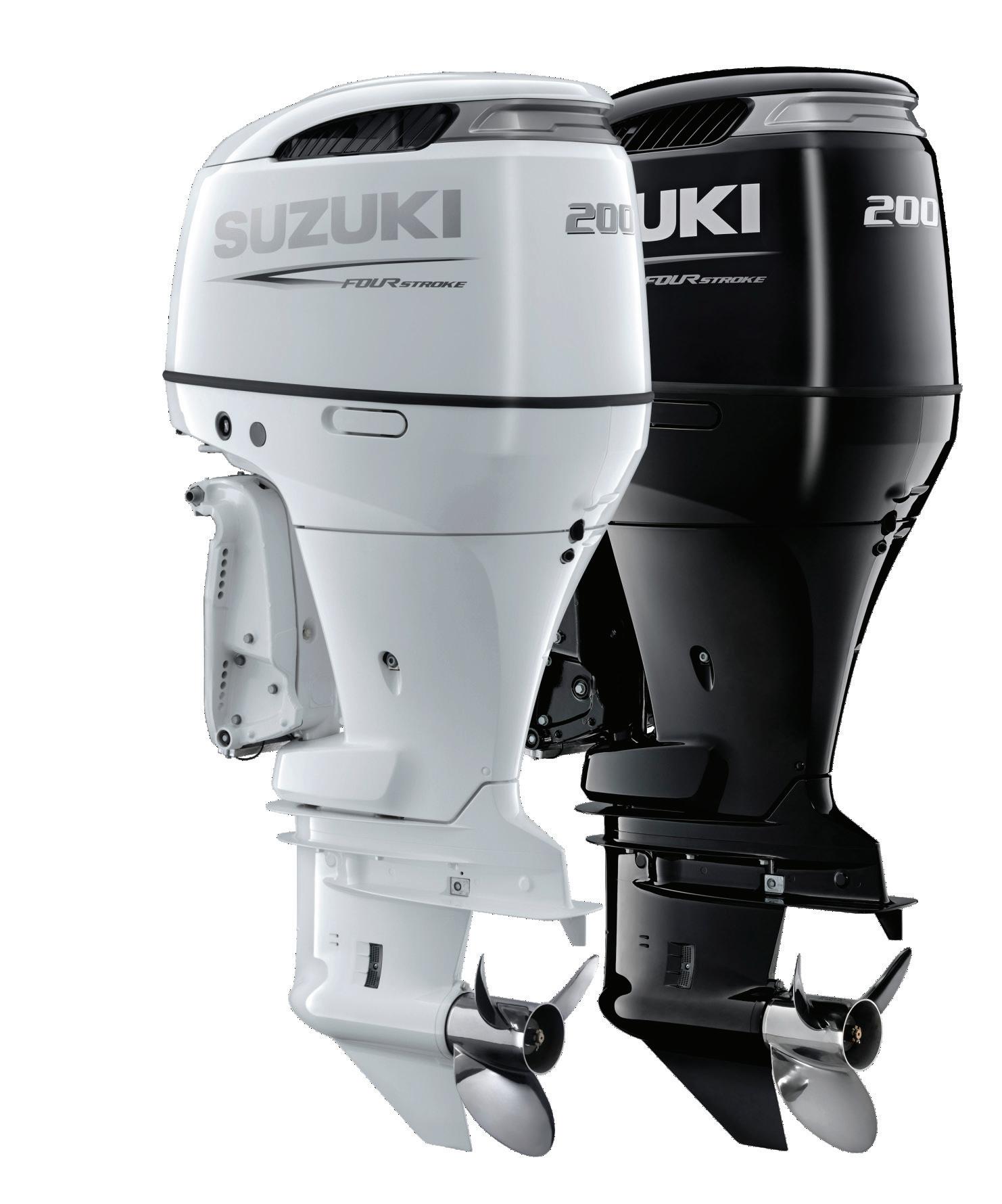
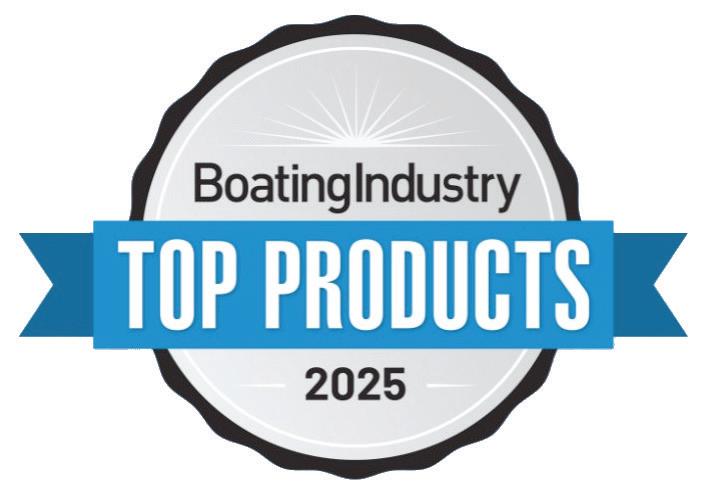
the-class features are easy integration with Suzuki’s new CANbus system for easier and more reliable rigging, Suzuki’s easy start system, automatic trim, keyless starting and troll mode.
“This is Suzuki’s 60th Anniversary in the outboard motor business, something we are very proud of,” said Cerka. “A big part of our success over these many years has been keeping our finger on the pulse of the market and coming out with the right products at the right time. Receiving this recognition from a publication like Boating Industry demonstrates that we are on the right track.”
The Dog Days of Summer, July and August has arrived, this has a big influence on fishing in Edgewater Backcountry and Mosquito Lagoon, most people will fish early morning, late afternoon, or at night. Start your morning fishing trips as early as possible to take advantage of the sunrise feeding pattern. Cloudy water is the usual for the summer months, use baits a fish can find. Smell, sound, and vibrations in the water are keys, smell can be achieved with bait such as shrimp, cut bait, or scented soft plastics like Gulp, sound made by top water lures with rattles or poppers, and baitfish like croakers and pigfish, vibrations from live finger mullet, mud minnows, and lures like spoons. One of the best live baits right now are the tiny “mini mullet” which are widespread in the backcountry, lagoon and ICW during early summer, they hatched here locally in early spring, now just big enough to stay put in a cast net, usually hugging close to sandbars and shorelines. Fish them free lined and tail hooked in shallow water or lip hooked with a small weight on the bottom of deeper holes and channels during summer heat.
The small mullet are also great summer flats bait, freeline near shallow flats edges, oyster and shell bars. Another option to fight the heat is to fish shade, some fish do take advantage of manmade structures during middle day sun shine, under bridges, docks, and boats, plenty to pick from,
there are uncountable docks and moored boats in coastal Volusia County, main rule on these is to pick older structures and moorings, old dock pilings are covered with barnacles and plant growth in turn attracting bait fish, seldom used docks also a plus to hold better game fish, docks with larger boats in residence usually have a deep hole to accommodate the boat. Fish sinking lures, shrimp, and live bait fish close to and under the docks, you will have to deal with snags around the structures but comes with the territory.
Long time moored or docked boats are great FAD’s (Fish Attracting Device), structured oriented fish will be caught in close and under, including Mangrove Snapper, Redfish, Snook, and Trout. Open water game fish like, Jacks and Ladyfish can be close by attracted by the shady spot and baitfish. Many docks also have a bonus of nearby old standing pilings, oyster bars, grass beds, and channel drop offs.
One of the best choices for summer night fishing are dock lights and bridges, schools of bait fish and sometime shrimp are attracted to the light and structure which in turn bring in the trout, snook, redfish, jacks, ladyfish, and snapper to name a few. Match the hatch of which type of bait you are seeing, use a small size lure, swim bait, jig, twitch bait, or soft plastic shrimp for most species. For the most strikes, a free lined
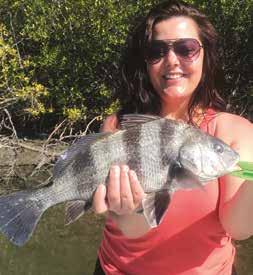
live shrimp can be the go-to bait. Anchor just up tide and a cast out from the light, throw your bait up current from the circle of light on the water and allow it to “swim” naturally through the target area. Outgoing tide can be best, but a moving tide in either direction is a must for a good bite.



"Subscribe to our text updates and get $10 OFF your next order of $35+ at Crabby Joe's!"

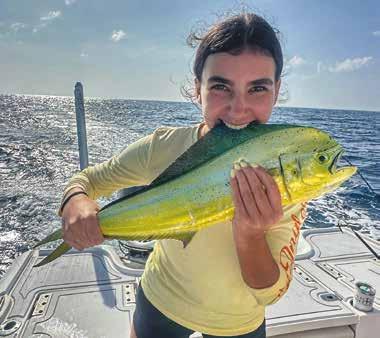

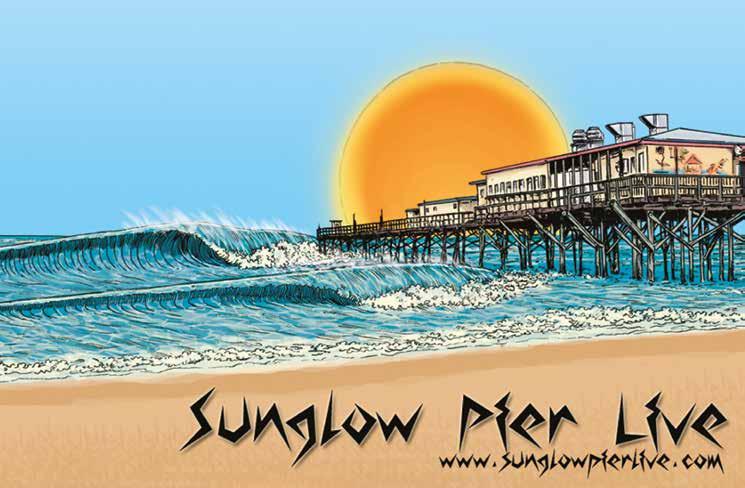
Captain & The Kids strives to always promote youth anglers both at the local level as well as nationally through our “Youth Angler Program.” If it was not for passing down techniques, traditions, and the love for the water, it would slowly fade away. It is our mission to always instill conservation and ethical fishing to our youth!
Capt. Evan started the Youth Angler Program after finding out how many kids in the New Smyrna Beach area had never been fishing, never been on a boat, and was born and raised in the area. Since that day Capt. Evan strives to getting more and more youth anglers on the water each and every year! Sol Fishing will do everything possible to make every young man or ladies fishing dreams come true. It does not matter if the kids want to go offshore or inshore, Sol Fishing will target whichever species they want to catch. Some of the most recent species that the youth anglers have been wanting to target are red snapper, lane snapper, cobia, amberjack, sharks, barracuda, redfish, and snook.
The Youth Angler Program is made possible by all our retailers who stock Sol Fishing’s gear such as our Hats, Decals, and Performance shirts and many more products. Stop by New Smyrna Beach Outfitters Outriggers, Donald’s Bait & Tackle, 38 Live Bait & Tackle, E & J Bait & Tackle Sunglass Cabana, Shades of New Smyrna Beach, Boaters Exchange, and Pedego of NSB to get your Sol Fishing gear to help support the Youth Angler Program! Sol Fishing’s amazing sponsors such as Tidewater Boats, Legacy Marine, Black Oak LED, Penn, Plano, Fenwick, and many more all make this amazing program possible!

The Central Florida Atlantic Coast –Volusia County area has some of the best fishing charter captains in the country. One of those is Captain Sean Smith with SRC Adventures. Capt. Sean is a graduate of the United States Naval Academy. He served as a US Naval Surface Warfare Officer onboard the USS Philippine Sea, CG-58, and the USS Enterprise, CVN-65, during Operation Allied Force and Operation Enduring Freedom. He has logged thousands of hours on the open ocean and has completed all USCG requirements as a licensed OUPV Captain. His 40 years of knowledge of saltwater fishing is something that he is passionate about sharing with others. He lives everyday to serve God, love his family, and make others around him feel appreciated. He believes that every fishing adventure is an opportunity to be an ambassador for the outdoors, create
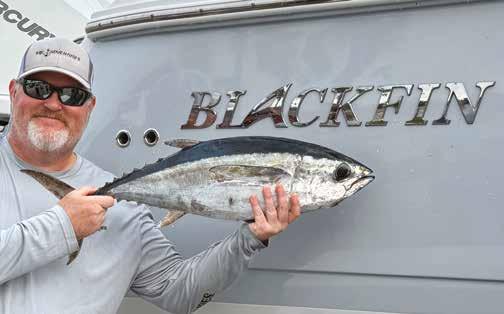
lifelong friendships, and put the clients on fish. Capt. Sean loves to spend countless hours maintaining his boat, his electronics, and his top-of-the-line gear to provide a world class adventure for his clients. It does not matter if you are a seasoned tournament fisherman or a “first-timer”, Sean and his team are fully engaged from start to finish. “It is very important to be approachable and courteous to everyone onboard”, Sean says. “Safety and Professionalism will always be the priority for
this Captain and Crew”, “but be prepared …… we get really excited when that drag starts screaming, rods start bending …… we just love fishing and are so blessed to be able to share our excitement and passion.” Visit Capt. Sean at www.srcadventures.com or just give him a call.

CAPT. SEAN SMITH SRC Adventures 386-318-1036
srcadventures.com


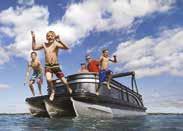

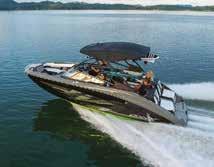





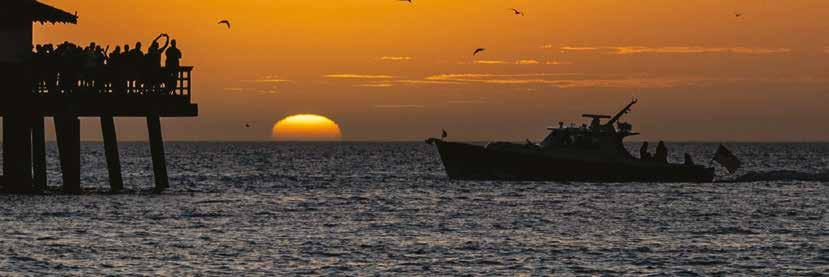

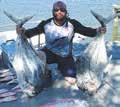


SRC Adventures srcadventures.com Nearshore/Offshore
Target Species: Wahoo, Mahi, Tuna, Cobia, Sailfish, Kingfish, Tuna, Amberjack, Pompano, Snapper, Grouper, Triggerfish
CAPTAIN NICK SICILIANO
386-405-7786
Beast Coast Fishing Charters beastcoastfishingcharters.com Inshore/ Offshore
Target Species: Redfish, Snook, Tarpon, Sheepshead, Snapper, Grouper, Sharks, Cobia, Grouper, Pompano, Mahi, Triggerfish, Tuna, Wahoo, Sailfish
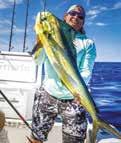

CAPTAIN DANIEL LEVESQUE 386-295-4581
Rare Breed Charters rarebreedcharters.com
Offshore/ Nearshore
Target Species: Grouper, Red Snapper, Tuna, Mahi Mahi, Wahoo, Tuna, African Pompano, Alligator, Deer, Hog, Elk, & Wild Turkey


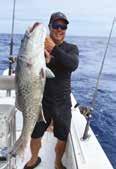

Sheephead, Snapper, Grouper, Triggerfish, Cobia,Amberjack, Mahi Mahi, Wahoo, Tuna, Sailfish, Shark, Golden Tilefish


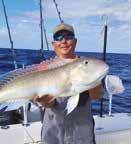
MARTY GOLDYS 386-679-0317
Reel Harmony Fishing Charters reelharmonyfishing.com Inshore/Nearshore
Target Species: Tarpon, Snook, Redfish, Trout, Flounder, Sheepshead, Cobia, Tripletail & Shark

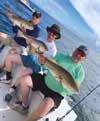

CAPTAIN TIM RUSSELL
386-846-1675
Captain Daddy’s Fishing Charters captaindaddysfishing.com Inshore/Offshore
Target Species: Redfish, Flounder, Snook, Tarpon, Cobia, Grouper, Wahoo, Snapper, Seabass, Kingfish, Mahi, Sailfish


CAPTAIN MARSHALL WALLOT
386-214-9595
New Legacy Fishing Charters newlegacyfishing.com Inshore/Nearshore
Target Species: Redfish, Snook, Trout, Flounder, Black Drum, Tarpon, Sheepshead, Tripletail, Snapper, & Weakfish



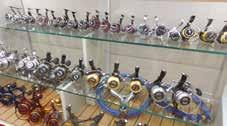

New Smyrna Outfitters specializes in offshore bait and tackle as well as inshore, flats, and fly fishing gear. Along with carrying all of the equipment you need, NSO offers services like rod/ reel repair, line spooling, splicing, rigging, outrigger setup, and much more. If you are not looking for fishing tackle, that’s ok, NSO also offers the best in apparel, eyewear, drinkware, and more. Some of the quality brands include but aren’t limited to Costa, Bajio, Olukai, Free Fly, Marshwear, Aftco, Anetik, Yeti, Stanley, Hemlock, Salty Crew. New Smyrna Outfitters strives to carry the best brands and offer the best customer service.
NSB Outfitters specializes in offshore bait and tackle, as well as inshore, flats, and fly fishing gear, with extensive options in apparel and accessories. New Smyrna Outfitters has the knowledge and experience to guide through whatever type of fishing you’re looking to do. SAME STREET, NEW LOCATION!
223a Canal St. | NewSmyrnaOutfitters.com (386) 402-8853 Mon-Sat 9am-6pm | Sunday Closed


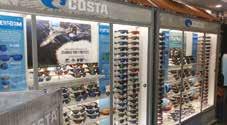







Summertime to me equals early July mornings and right before dark success. With July being one of our hottest months getting on it early means beating the heat and beating the afternoon thunderstorms. Flounder are one of my favorite fish to target in July. I catch

a lot of fish in the river along any creek mouth that has a sandy or muddy bottom, especially off the points of oyster bars where it turns to soft bottom. I like to bounce small paddle tails off the bottom with a pretty slow retrieve, & Berkeley Gulp 3” chartreuse minnows being my highest performer. I also get a lot of fish in the inlet along the rocks in sand patches. I use mud minnows as my go to, but shrimp and small finger mullet also produce a ton of fish. I like 20 # fluorocarbon and a # 2 offset circle hook, Mutsu style is my favorite. The trick is not to try and set the hook if you think you have one on but to let some tension out of the line to entice the flatty to suck the minnow in past the hook, then slowly start reeling! I also net all my flounder as I’ve lost a lot of door mats trying to flip them in the boat! July is usually calm enough for you to explore the close artificial reefs off Flagler Ave in NSB and the sun glow reef just off sun glow pier. These spots hold a lot of flounder, and they also have a good variety of other species like flounder, red, black drum, mangrove snapper, and more that will keep you busy! Don’t forget to fish the tide swings in July for the reds and snook around the bridges and the inlet at first light and before dark, these spots will have a bunch of big reds and snook hungry

to eat before the sun gets cooking! Summer is in full swing so get out on the water and if you see us out there say hello!
CAPT. JAMIE THRAPPAS Yellow Dawg Fishing www.yellowdawgfishing.com (386)366-3424


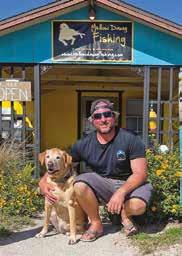




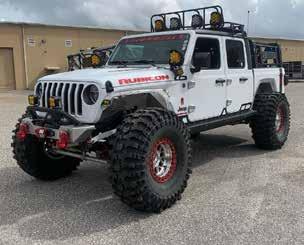

8
9
6
5
2
3
1


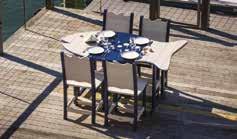
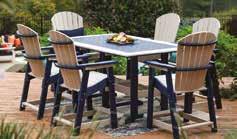
2.1 8:34 3.2 2:14 0.2 1:42 -0.2 6:30 8:27
10 Thu 8:46 2.1 9:17 3.3 2:56 0.1 2:25 -0.2 6:31 8:26
11 Fri 9:31 2.2 9:58 3.3 3:35 0.1 3:07 -0.2 6:31 8:26 12 Sat 10:14 2.3 10:38 3.3 4:13 0.0 3:50 -0.2 6:32 8:26
Sun 10:57 2.4 11:18 3.2 4:52 0.0 4:35 -0.1 6:32 8:26
Tue 12:00 3.1 12:32 2.6 6:18 -0.2 6:29 0.0 6:33 8:25 16 Wed 12:45 2.9 1:24 2.8 7:05 -0.2 7:33 0.1 6:34 8:25 17 Thu 1:34 2.7 2:21 3.0 7:53 -0.3 8:37 0.1 6:34 8:24
18 Fri 2:30 2.5 3:24 3.1 8:43 -0.4 9:41 0.1 6:35 8:24
8:23
21 Mon 5:45 2.3 6:29 3.5 11:33 -0.4 6:37 8:23
22 Tue 6:43 2.4 7:25 3.6 12:53 0.0 12:33 -0.5 6:37 8:22
23 Wed 7:39 2.5 8:18 3.6 1:49 0.0 1:30 -0.5 6:38 8:22
24 Thu 8:34 2.6 9:09 3.6 2:41 -0.1 2:24 -0.5
The fish can’t wait, so I need my bait. I still love getting up at 5 o’clock in the morning, going out for bait and being with the people who are motivated to go fishing and supply the bait for these beautiful healthy waters in Florida: blue crab, live shrimp, fiddler crab, live sand fleas, small mullet fish, gum.
With the sun rising and the fish biting, the conditions now are just right. The water is at 76° and pompano are sticking around. It’s time to Bamba, so I’m setting up four poles. The tide is three hours out, halfway to low tide, one of my favorite times to fish. Plenty of water in the ocean. Two rods have sand fleas, and two rods have crab knuckle on them. I’m listening to some Jamaican ska music by the Skatalites, which makes this 90° day seem real cool. Or, as the Third World band says, “96° In the Shade.”
My short pole, a 9-foot custom rod, is my shortest pole. I call it Pompano Pat, named after my old friend. Suddenly, it’s starting to tap dance, now it’s doing some reggae moves. And then the pole just stood straight up. Either I broke my line, or it’s swimming in…No, it’s going out again. This fish has got a mind of its own. It is running like a pompano from side to side, and I’m stepping on lines and over lines. I’m gaining, I’m gaining… It’s on the beach, probably my biggest one of the year, a 21-inch-to-the-tail pompano, enough to feed a family of six. I’m sure it was close to 5 pounds! Sorry, I think I better calm down a little. Phew! It hit on the crab knuckles. Just to let you know
about blue crab, and how I cut it (it makes a difference): The blue crab habitat is in the Western Atlantic from Maryland down through Florida around to Louisiana. Of course, in Maryland it’s known as the Maryland blue crab. They are fished recreationally and commercially. They range in color from blue to olive green with the claws of the female being bright red. The largest blue crab can grow to be 7 inches long. They feed on everything: crustaceans, each other, fish and anything dead in the water. They hurt when they grab you, bad. It has happened to me many times. I guess it’s them getting even with me for cutting them up. So my wife says.
To cut them up, you cut them in half, chop the legs off up to the shell, peel the shell back, and in the grooves left from the legs cut into 6 to 8 pieces where the meat is. Then you hook it right through the hole where the leg was, and you’re on fire! The bigger pompano love this, so do permits. You might not get as many hits but when one hits, it’s a good one. I make my own pompano rigs with three hooks size 2 and always a Sputnik weight which I get from the Sinker Guy, who I admit is a good buddy. Ya, mon!
Tonight is gonna be special, starting with the music playing that old Jamaican favorite, “This Is a Fish, Not a Goat”. With this said, me and a slab of a big fish - which is gonna take a while to barbecue with my mambo sauce on it - are definitely heading to the smoker!


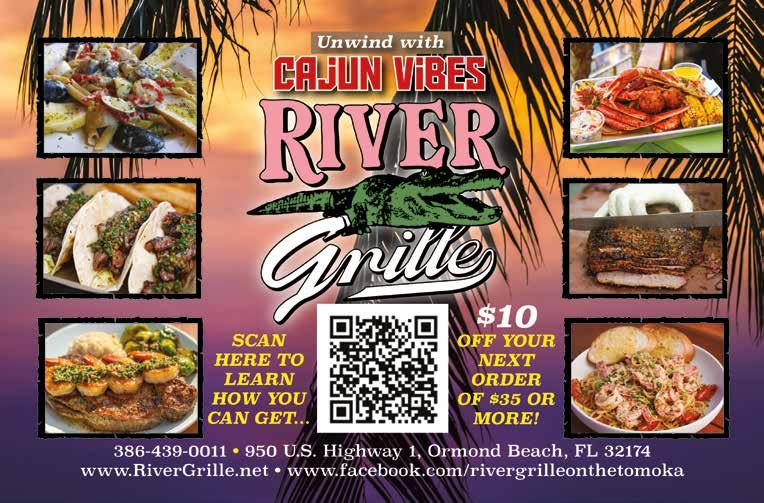
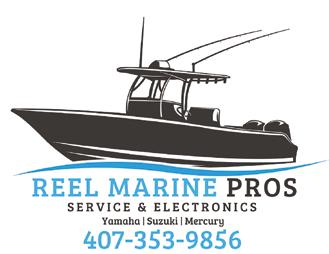










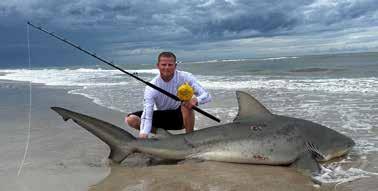









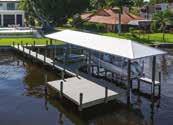

s we enter Florida’s hot summer months of the fishing season, it’s important to revisit or develop a comprehensive safety checklist. Beyond what is legally required, there are many additional precautions to consider. I like to think outside the box, so my list covers everything from personal safety and physical ailments to weather preparedness and wildlife encounters. This is Florida, y’all—we need to be ready for anything!
Let’s start with the basics. Everyone should have a Coast Guard-approved PFD (Personal Flotation Device). Even in Florida’s shallow waters, emergencies can happen, and a PFD will keep your head above water. A whistle is also required on your vessel to alert others to your need for assistance. For those who hit the water early or stay out until evening, a 360-degree light atop a flagpole is essential. Waves can obscure your kayak from boaters’ view, so your light and flag should be well above your head. If you use a trolling motor or any motorized vessel, red and green navigation lights are required on the bow. Keep your paddle secure and within reach—get one that floats!
Keep your cellphone tethered to you in a waterproof case. Besides snapping photos of your catches and sunsets, it serves as your emergency
lifeline. If you’re kayaking alone, let someone know your float plan. Download a weather app for real-time alerts.
Florida summers bring temperatures in the mid to upper 90s, so staying hydrated is critical. Pack a cooler with ice, water, and electrolyte drinks. Add healthy snacks rich in protein and complex carbohydrates. Nutrition plays a huge role in how you feel on the water. A cooling towel can help regulate body temperature. Wearing a face or neck gaiter adds sun protection, especially with sunlight reflecting off the water. Apply sunscreen before heading out and reapply during the day. A rimmed hat will shield your scalp and face.
Even with a clear forecast, prepare for rain. Invest in rain gear and UV-protectant clothing. Striker is a favorite brand of mine—they make high-quality apparel for all conditions.
A First Aid Kit is a must. Include scissors, Band-Aids, alcohol wipes, ointment, and antiseptic spray for injuries like cuts, stings, or bites. Don’t forget bug spray—mosquitos and no-see-ums are relentless.
Lastly, stay aware of your surroundings. That means watching out for people at boat ramps and being mindful of local wildlife. Alligators, sharks, bobcats, bears, hogs, snakes, otters, bees,
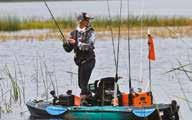
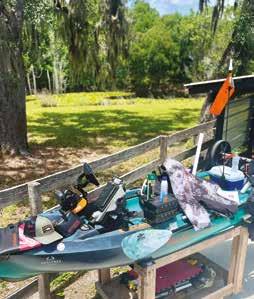
and spiders are just a few you might encounter. I won’t tell you exactly what to carry, but I personally keep a knife and mace with me. It’s a jungle out there—be safe and have fun! WENDY BILES wendy.m.biles wendy_biles_fishing

Bring on the summertime heat. The sea surface temperature is warming up fast and the offshore bite is doing the same. Let me take you on a little journey into the mind of an offshore charter captain during the wonderful month of July.
First, get everything prepared. Take the time you need to work on your gear. Clean up those reels, rod eyes, rollers, outriggers, planers, etc. Change your line, leaders, and hooks. Give everything a little TLC so when that moment comes and a 50+ inch Mahi or Wahoo takes the bait, you will be confident in your preparation.
Next, analyze the conditions. The ocean is always changing, so stay flexible. Use online resources to track tides, currents, temperature breaks, wave patterns, wind direction, and weather forecasts. This helps you decide where to fish and boosts your confidence for a more enjoyable, exciting day on the water. In Florida, summer afternoons often bring thunderstorms, so beat the storms by heading out early. The morning is cooler, and cruising out at sunrise, watching for birds, is one of my favorite parts of being a offshore captain… makes my heart pound just talking about it.
Now, diversify your tackle and tactics. No two days are the same, so don’t hesitate to change your spread. Try different trolling setups—chuggers
with ballyhoo, planers with spoons, or cedar plugs. Mix up colors and sizes. For bottom fishing, stock up on live or frozen bait, and consider stopping at a nearshore reef to load up with live bait using sabiki rigs. Once at your fishing spot, take your time— Don’t just start dropping chicken rigs or fish finder rigs as soon as you arrive the spot. Slowly, look around first, what does your sonar show you? How is the current or wind moving the boat? . When you're ready, start with some chum to get the fish excited. Once you are all set and lines are dropped to the bottom, send out a free line live bait with a grunt or a pinfish, keeping in mind the direction of current. Some of my biggest fish have been caught on a live bait free line while bottom fishing over structure.
Now, it’s time to load the fish box and bring home the meat. But there is a critical item that we must always focus on during the summer, that is our bodies. Stay hydrated, drink water and eat lots of snacks. Moderate the alcohol and sugar consumption while getting a workout loading the boat with fish. Apply sunscreen or wear a neck gator or a big hat. These things will make you feel better, keep your energy up, and help you be a better angler.



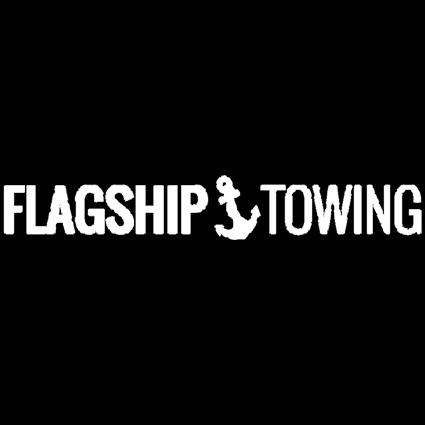

I want to wish everyone an enjoyable and safe
summer. If you are looking to take an offshore adventure, or just want some advice, please don’t hesitate to call me.
srcadventures.com

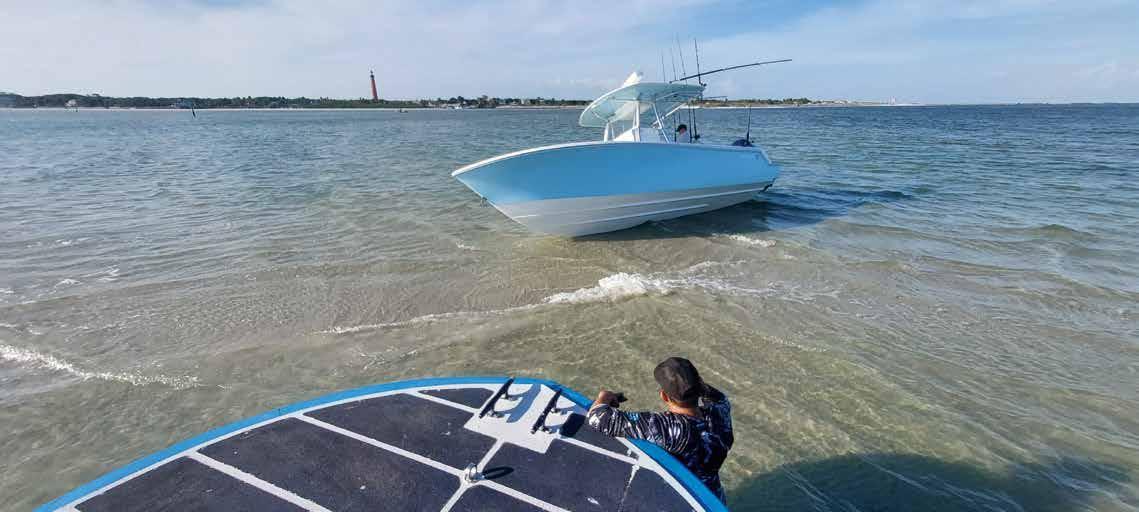


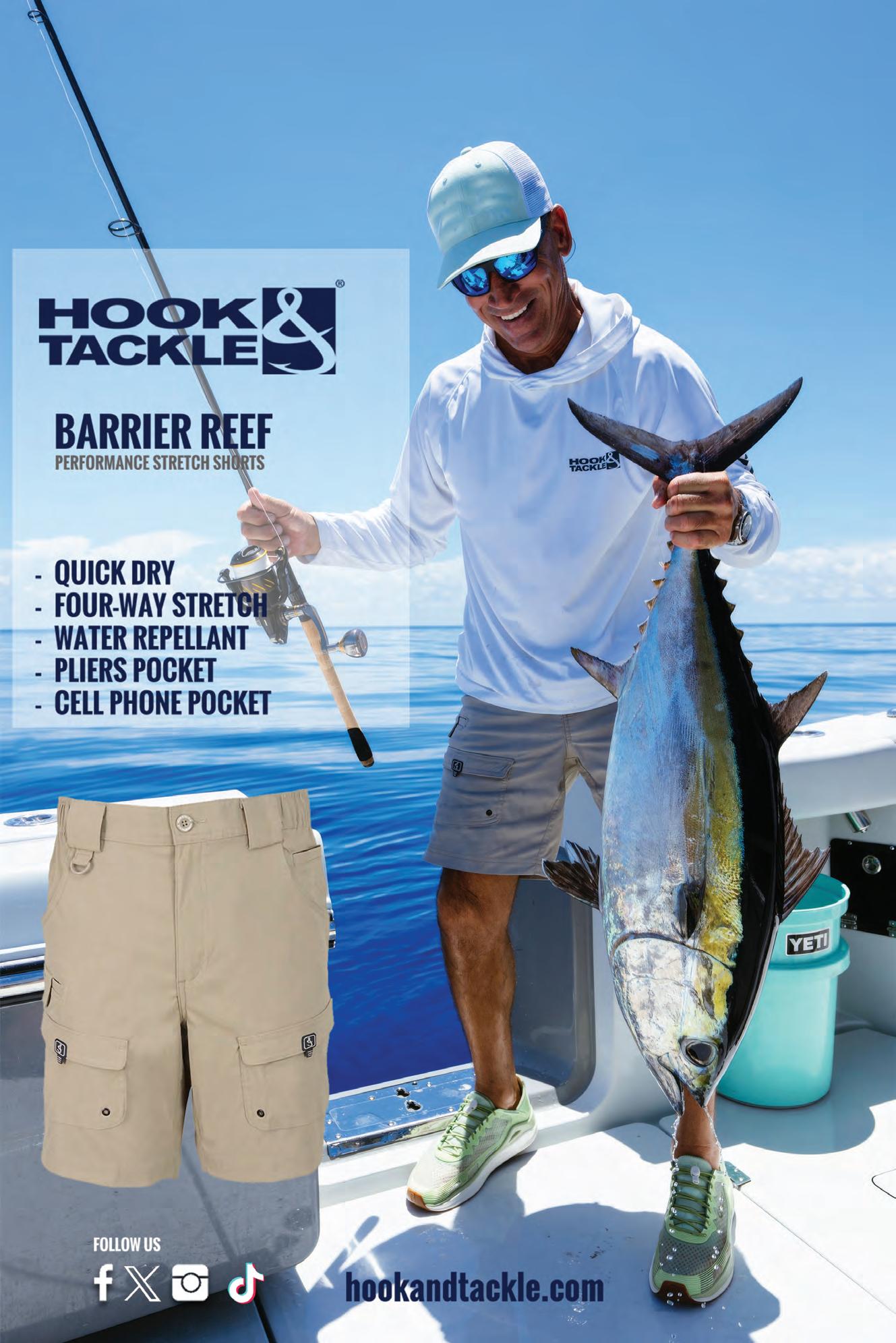

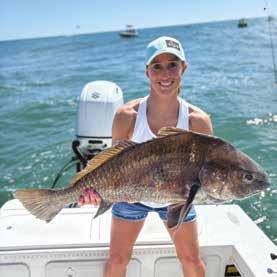
(Pole Dancer Fishin’ Charters)

(Captain Daddy's fishing charters)

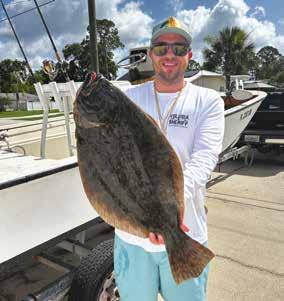
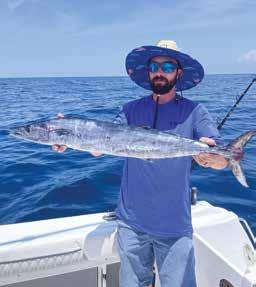
(SRC Adventures)

Scan the QR code to submit your photo for a chance to be showcased on our Brag Board! Your submission automatically enters you into our monthly random drawing for a $50 Gift Card!

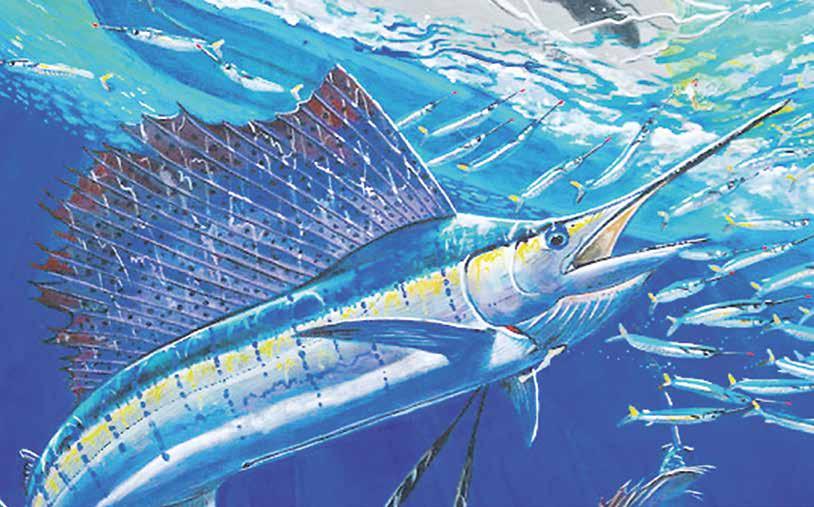
Serves 4
Ingredients: • 4 red snapper fillets (6-8oz each) • Salt and pepper to taste • 2 tbsp olive oil • 3 garlic cloves, minced •¼ cup fresh parsley, chopped • 2 tbsp fresh thyme, chopped • 2 tbsp fresh rosemary, chopped • ¼ cup panko breadcrumbs • ¼ cup grated Parmesan • 1 lemon (zest and juice) • Lemon wedges for garnish
1. Preheat oven to 400°F. Line baking sheet with parchment paper.
2. Pat fillets dry, season with salt and pepper, place skin-side down on prepared sheet.
3. Mix olive oil, garlic, herbs, panko, Parmesan, lemon zest, and juice in small bowl.
4. Spoon herb mixture evenly over fillets, pressing gently to adhere.
5. Bake 15-20 minutes until fish flakes easily and crust is golden brown.
6. Serve with lemon wedges and additional fresh herbs if desired.
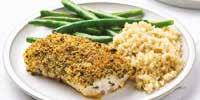

Serves 4
Ingredients: • 1.5 lb red snapper fillets
•1 cup cornmeal • ½ cup all-purpose flour • 1½ tbsp Creole seasoning • 1½ tsp kosher salt, divided • ¼ tsp black pepper • 4 cups peanut oil
1. Combine cornmeal, flour, Creole seasoning, 1 tsp salt, and pepper in a gallon-size bag. Pat fillets dry and cut into smaller pieces if desired.
2. Sprinkle remaining ½ tsp salt over fillets. Add a few fillets to bag, shake well, and place on wire rack. Repeat with remaining fillets, then bread once more for extra crispiness.
3. Heat oil to 350°F. Fry fillets 2-4 minutes per side until golden brown and floating. Work in batches to avoid crowding.
4. Transfer to wire rack over paper towels. Serve hot with lemon wedges and preferred sauces.




Make the most of your hard-earned catch with these three delicious recipes.
4
Seasoning Mix: • 2 tsp kosher salt • 1 tsp black pepper • ½ tsp cayenne pepper • 2 tsp paprika • 1 tsp dried thyme • 1 tsp dried oregano • ½ tsp garlic powder • ½ tsp onion powder
For Fish: • 4 red snapper fillets (6-8oz each) •2 tbsp avocado oil • 1 lemon, cut into wedges •Fresh parsley for garnish
1. Combine all seasoning ingredients in a small bowl.
2. Generously coat flesh side of fillets with seasoning mixture.
3. Heat oil in large non-stick skillet over medium-high heat until shimmering.
4. Place fillets flesh-side down; cook undisturbed 6 minutes until dark crust forms.
5. Flip to skin side, press with spatula to flatten, cook 3 minutes more until opaque and flaky
6. Transfer to plates; serve with lemon wedges and parsley


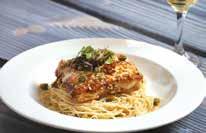
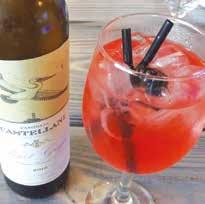
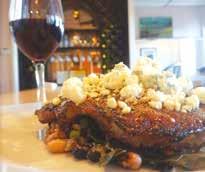

By A. deGruchy
For two days every July, Florida’s coastlines, especially in the Keys, come alive with divers, snorkelers, and boaters all chasing one thing...spiny lobster. !is short window, known as Lobster Mini Season, is a chance for recreational shers to get in the water and collect lobster before o cial season begins on August 6. It is fast-paced, competitive, and incredibly rewarding if you know what you are doing.
Mini Season always falls on the last Wednesday and !ursday of July. It is a long-standing Florida tradition and one of the most exciting events of the year for local divers and visitors alike. But it is also highly regulated and o$en chaotic, so the di erence between a great haul and a frustrating day o$en comes down to preparation.
To start, you’ll need snorkeling gear, a legal lobster gauge, a dive &ag, net and tickle stick. !e best nets are the “Lobster Florida Nets” by Brook Crist. !ese nets are lightweight, easy to handle in the water, and extremely e ective when it counts. When it comes to nding lobster, structure is everything. In the Keys, ledges and rocky crevices are prime spots. Look for antennae sticking out from under the ledges. Lobsters o$en cluster together, so if you nd one, there are likely more.



!e water depths also vary anywhere from 3 feet to much deeper, from 20 feet and beyond. To catch them, approach slowly from behind, use your tickle stick to gently coax the lobster forward, but never grab from behind as they’ll retreat deeper. When the lobster begins to walk, quickly position your net to block its escape. It’s important to note that spiny lobsters swim backwards when threatened, so your net should be placed just behind them, anticipating their retreat and staying one step ahead of where they’re going. Once in the net, grab the end of the net lining so the lobster doesnt escape and measure it in the water using your gauge. Only lobsters with a carapace of at least three inches can be kept.

buddy, stay visible, and if you are not an avid diver, give yourself enough time between dives to catch your breath. Be aware of boat tra c and always use a dive &ag.
!ere are speci c regulations you must follow depending where you are, every are has limits and all lobsters must be measured while still in the water. You must also have a valid Florida saltwater shing license and a lobster permit.
Additionally, there are no-lobstering zones to be aware of; for instance, in the Florida Keys you cannot catch lobster within 300 feet of any shoreline, residential or commercial structure, public or private dock, jetty, or seawall from land during Mini Season. In some zones like the Key Largo and Islamorada Sanctuary Preservation Areas, lobstering is prohibited altogether. Always

When you return to the dock, a$er tailing the lobsters you can prep them however. Our favorite is to slowly poach them in butter and then mixing it into some homemade mac & cheese. However you cook them, there’s nothing quite like eating what you caught yourself. Florida’s Mini Season is one of the most thrilling sheries the state has to o er. With the right gear, smart planning, and respect for the rules and the reef, it’s an experience you won’t forget.
Follow deGruchy’s adventures at @bean_sport shing on Instagram and YouTube.
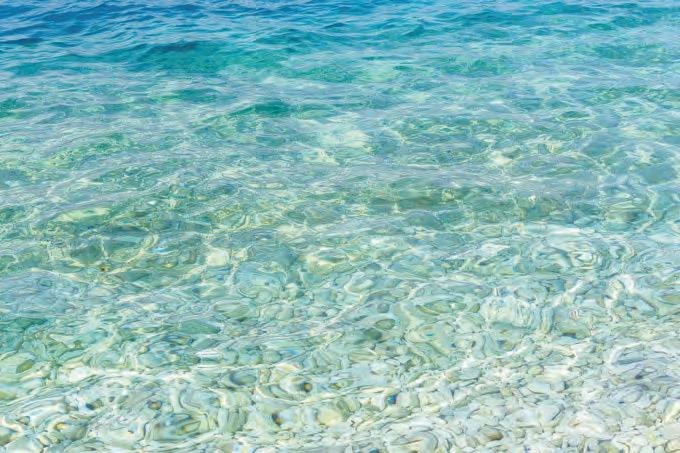



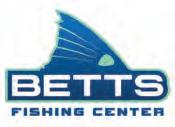

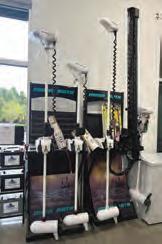


In the world of watersports, outdoors, and coastal living, staying ahead of the curve isn’t just a competitive edge—it’s a necessity. That’s where Surf Expo comes in. As the leading marketplace for watersports, coastal, and outdoor lifestyle brands, Surf Expo isn’t just another trade show—it’s the heartbeat of the industry.


Held twice a year in Orlando, Surf Expo draws thousands of retail buyers and brands from across the country—and around the world. From tackle shop owners and coastal outfitters to resort boutiques and outdoor lifestyle stores, attendees come to explore, connect, and stock their shelves with the hottest products for the season ahead.
What makes Surf Expo such an essential stop on the retail calendar? It starts with the sheer variety. From high-performance gear and accessories to apparel lines that bridge the gap between beachwear and everyday style, the show covers every angle of coastal living. Whether your customers are anglers, surfers, paddleboarders, or just enjoy hanging out on a shoreline, you’ll find products that resonate.
Surf Expo is a launchpad for innovation. It’s where new brands make their debut and where trusted names unveil their latest collections. Walk the floor, and you’ll see sustainable materials in outdoor apparel and gear—trends that shape what ends up in your store and, ultimately, in the hands of your customers.
But it’s not just about the gear. Surf Expo is a place to connect and build lasting connections. With educational sessions and hands-on demos, retailers gain real-time insights into consumer behavior, merchandising strategies, and industry evolution. The chance to hear from thought leaders and engage in conversations that shape the future of the industry is invaluable.
Even more than a business event, Surf Expo feels like a gathering of friends. There’s an unmistakable sense of community that comes from being surrounded by people who love the water, the outdoors, and the lifestyle that ties it all together. It’s an event where passion meets professionalism, and where inspiration flows.
For businesses grounded in coastal life—whether you run a marina shop, a beachfront boutique, or an outdoor outfitter—Surf Expo offers the perfect blend of product discovery, industry insight, and relationship building. It’s a one-stop destination to get inspired, get stocked, and get ahead.
Attend Surf Expo, and experience firsthand where the business of coastal lifestyle meets the adventure of the outdoors. Because when it comes to outfitting your customers for life on or near the water, this is where it all begins.
Visit surfexpo.com to see a list of exhibitors and events.
Qualified Retail Buyers - Register for Free Before August 21, 2025.





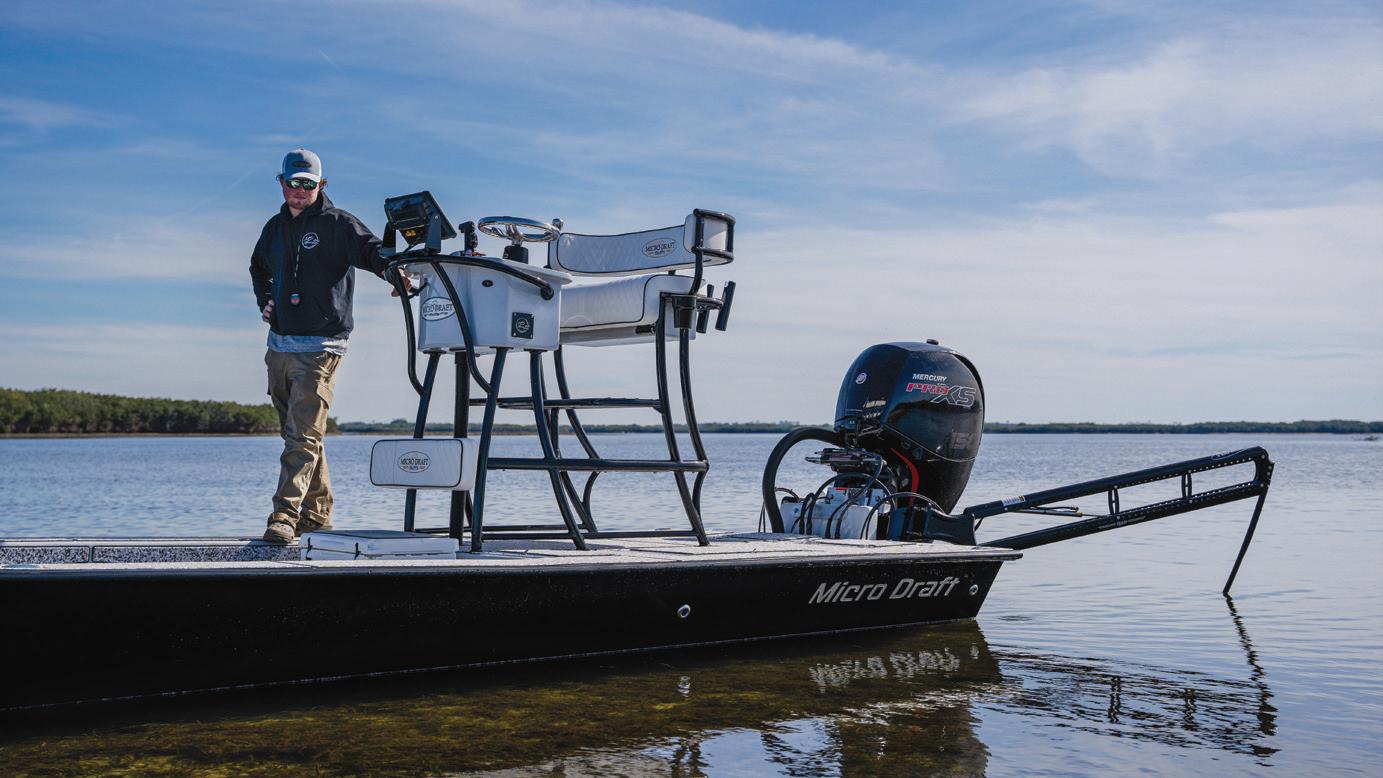



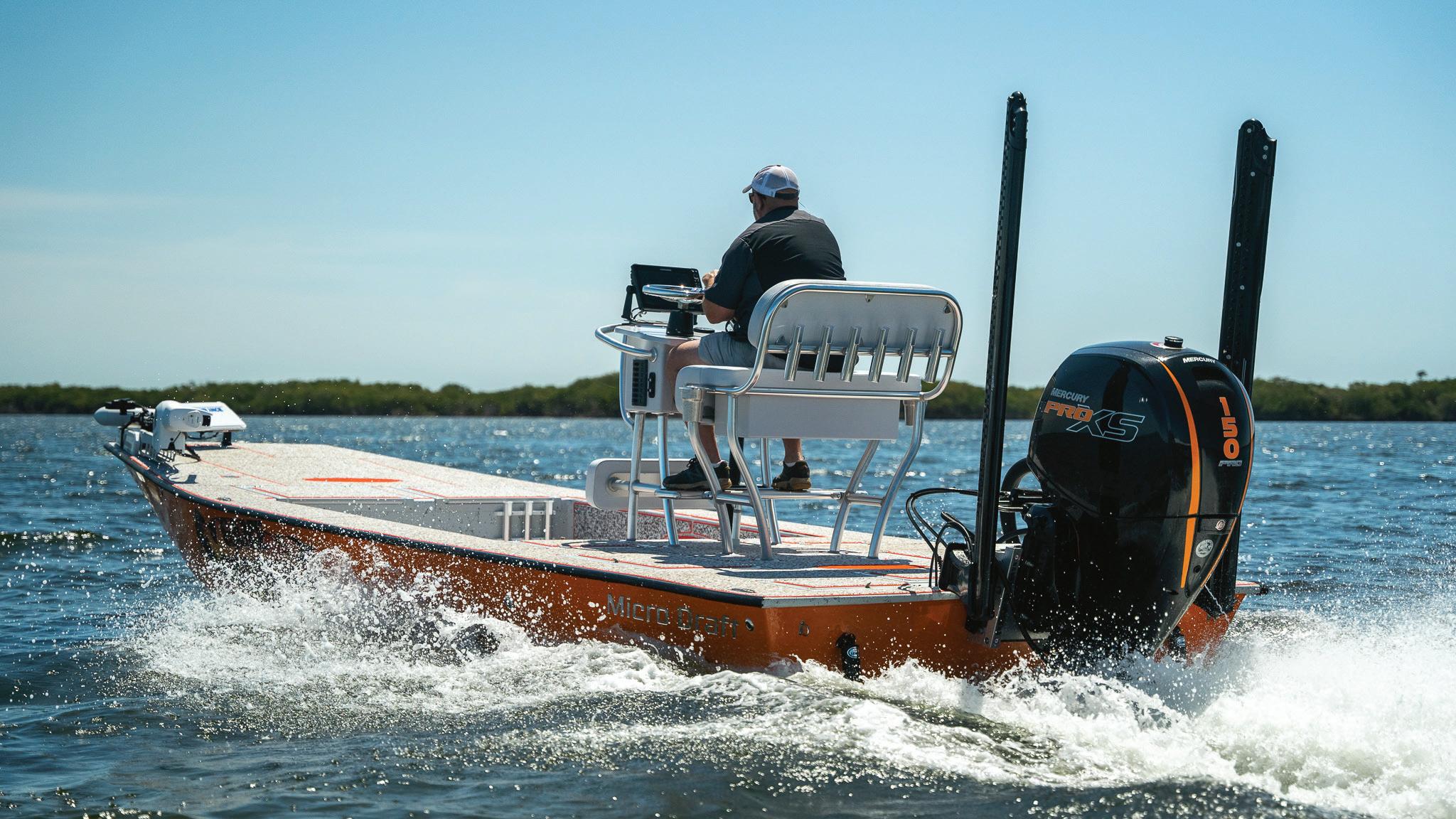
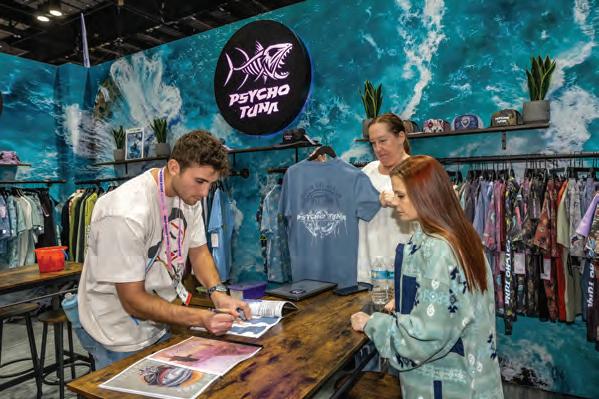
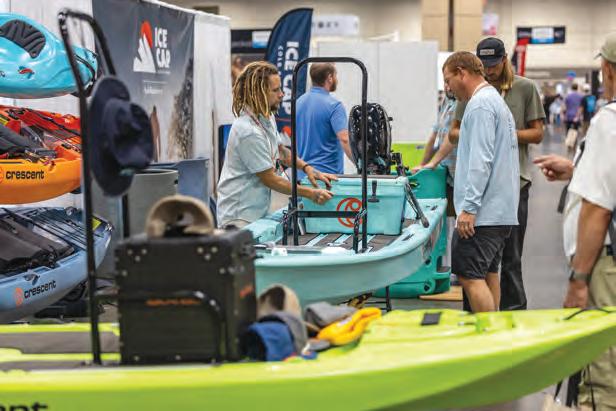
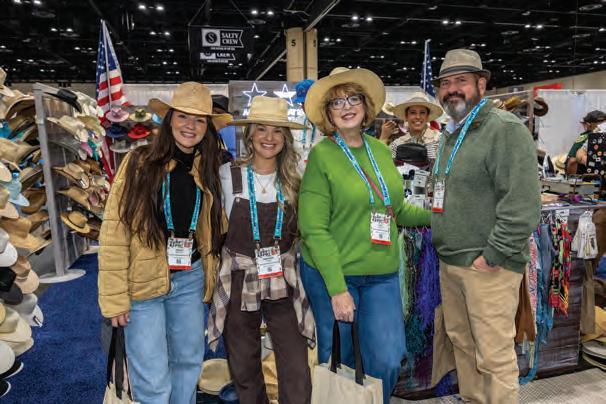
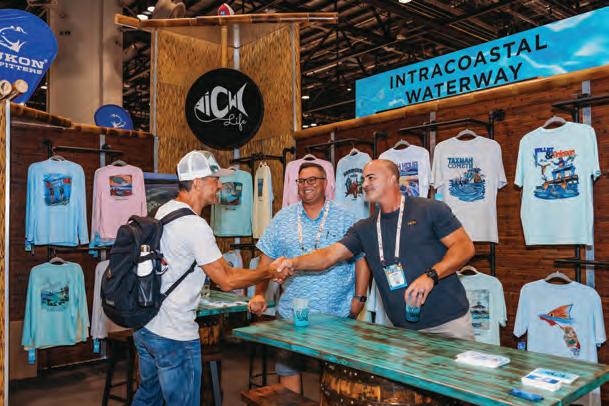

By atch Maguire
For retailers in the outdoor industry, showing up at ICAST each year is a pilgrimage that enables every town and every shery in many countries to be equipped to catch more sh and pursue their outdoor experience better. New innovations and inventions are the hallmark of this massive four day event, and while we all recognize the rapid rate of change occurring in our lives through advancements in technology and entrepreneurial excellence, witnessing the evolution of the art of catching sh over the last 25 years has, for this writer, been nothing short of mind-boggling. It’s as if the sh don’t stand a chance. Today’s electronics and gear are so advanced that anglers can almost negate the luck and even the skill factor that played such an important role in yesterday’s angling success. !at’s not to say acquiring the skills and
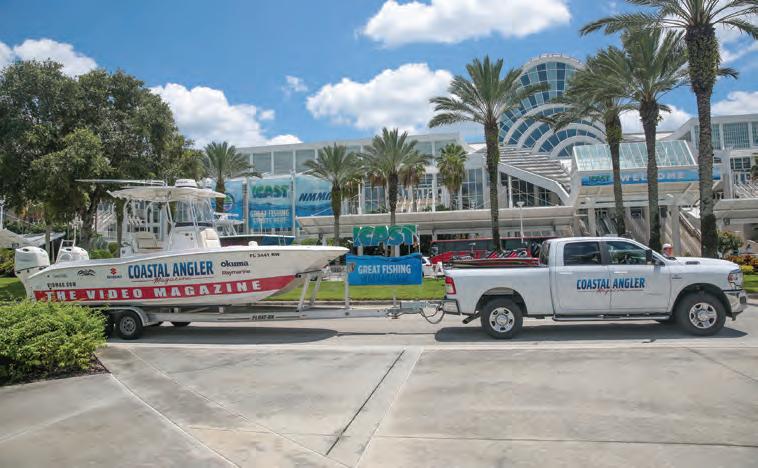
ICAST 2025, the world’s largest sport shing tradeshow, will be held July 15-18 at the Orange County Convention Center in Orlando, Fla. ICAST is a trade-based show and is not open to the general public. “The show is the cornerstone of the sport shing industry, bringing together manufacturers, retailers, consumers, conservationists, state agencies and other sport shing stakeholders. In its 68th year, ICAST continues to be the place where the most valuable business relationships are born, strengthened and celebrated.” www.icast shing.org
expertise to utilize today’s innovative equipment doesn’t require e ort, dedication, and focus as the pursuit of excellence in shing did a generation ago; it’s only to say that it’s di erent today and to suggest that it will continue to evolve.
I recently shed with an accomplished young guide for snook in the Sebastian Inlet (on the east coast of central Florida) and his electronics and forward sonar were so exceptionally dialed in that we literally targeted the largest snook with the precisely duplicated bait and in a three hour trip we caught nine world class snook that, any one of




which, 20 years ago would have been considered a “ sh of a lifetime.” Braid line, superior rods, smooth reels. All these advancements made their introductions at ICAST.
!is year, Coastal Angler and its’ vast network of Franchisee Co-publishers will be scouring the booths to bring you the latest and greatest in new innovations to our beloved sport.
For an up to date look at what we’re seeing at ICAST 2025, check out all of our ICAST coverage at CoastalAnglerMag.com and VidMag.com.
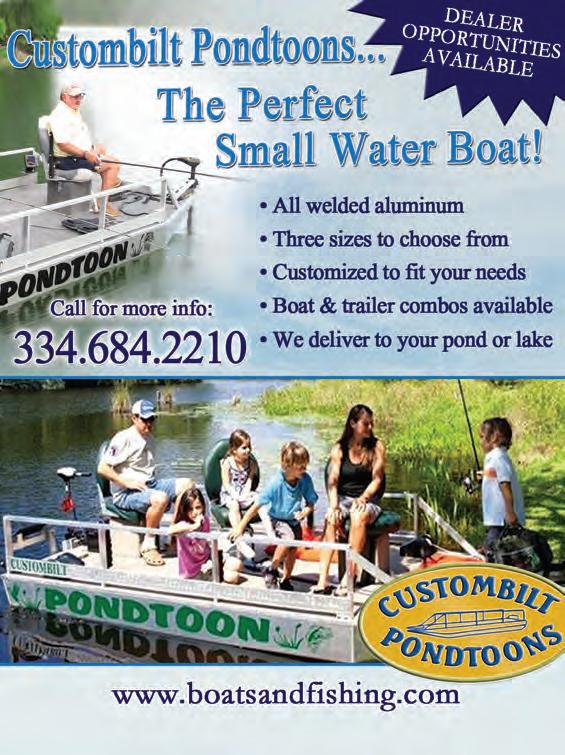
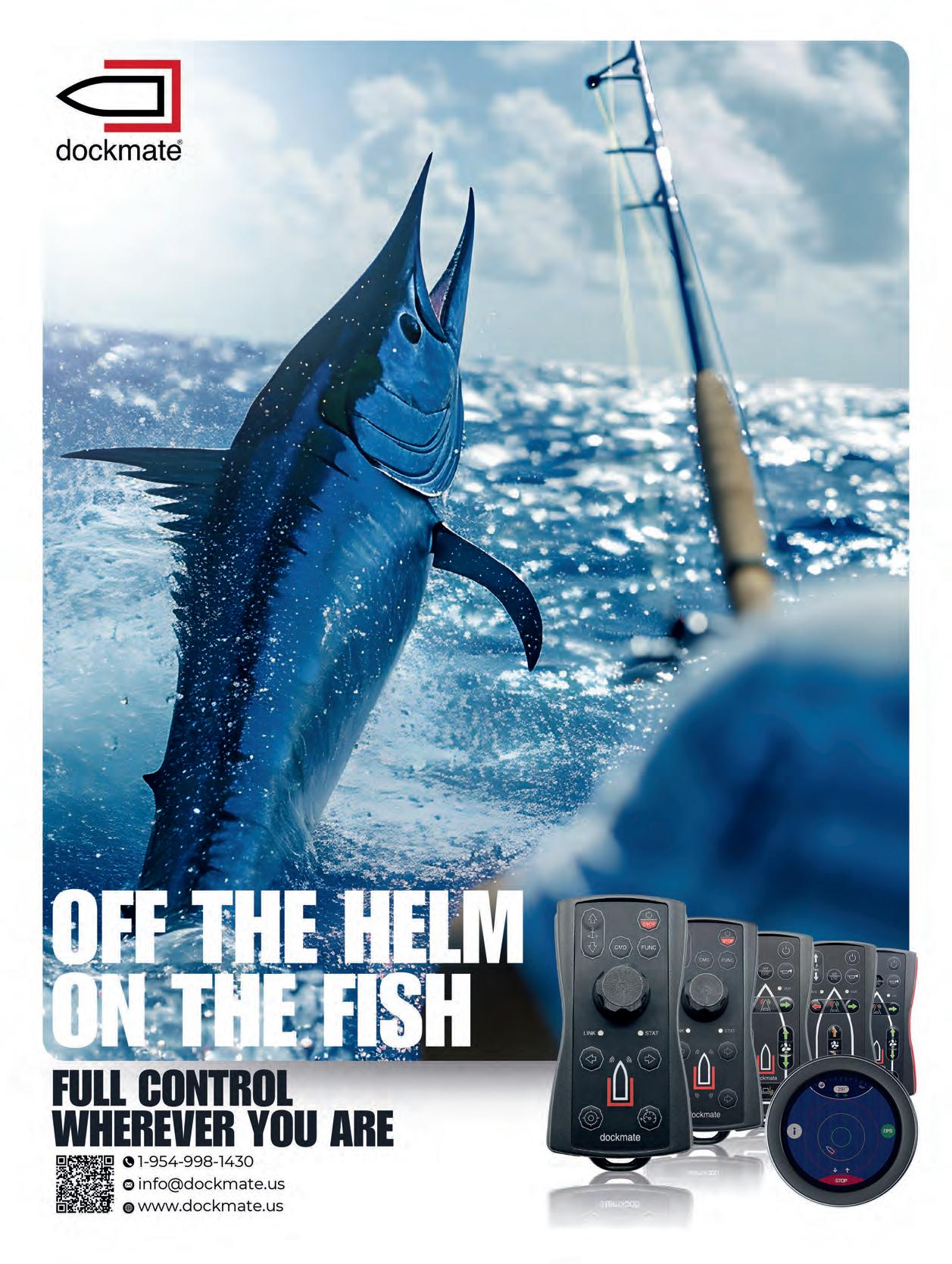


The Coastal Conservation Association (CCA) Florida STAR competition presented by Yamaha is thrilled to announce the newest division to the summer-long shing event, the Drum Spots “Lots-a-Spots” red sh division presented by Gulf States Automation. !e new division adds a unique twist to the popular catchphoto-release competition by awarding anglers for catching red sh with the highest number of spots.
Unlike any other division, “Lots-A-Spots” celebrates one of the most distinctive and eyecatching features of red sh, the iconic black spots. Participants in this division will submit photos of his or her catch, and the sh with the most combined spots on both sides will be awarded prizes.
“We’re thrilled to introduce the Drum Spots ‘Lots-A-Spots’ division presented by Gulf States Automation to the 2025 CCA Florida STAR competition,” STAR Director Capt. Leiza Fitzgerald said. “ !is exciting, new division adds another level of fun and strategy for our anglers, rewarding those who reel in the red sh with
the most spots. It’s a great way to celebrate the unique beauty of these sh while encouraging participation in a conservation-minded, catchphoto-release shing competition.”
!e “Lots-A-Spots” division continues STAR’s mission to highlight Florida’s diverse marine resources while encouraging sustainable practices through catch-photo-release participation. Anglers who participate in the division must submit photos of the le$ and right side of the red sh. !e winning sh will be the red sh with the most spots counted and combined on both sides of the sh’s body.
!e 2025 CCA Florida STAR competition presented by Yamaha invites anglers and nonanglers alike to participate for their chance to win prizes valued at almost $500,000, including boats from Carolina Ski , Sea Born, Spyder and Micro Dra$ Ski , Yamaha motors, scholarships and more.
Registration is open throughout the competition. To register for STAR 2025 or for more information on divisions, prizes and more, visit cca star.com.

• 1st Place: SUP Customs Hybrid Skiff with trolling motor bow mount, Minn Kota Riptide Power Drive 12V Trolling Motor & transom bracket with 6HP Yamaha, Power Pole Micro, and a great accessories package plus a Ross Currington Art replica of winning redfish
• 2nd Place: Abyss Battery 36V Battery with charger, Ross Currington Art replica of winning fish, Bull Bay Rod/ Florida Fishing Products Reel and Bahio Sunglasses
• 3rd Place: Power Pole 8ft Sportsman, King Sailfish Mount replica of winning fish, Bahio Sunglasses and Relentless Knife
• 4th Place: original art piece by Ashton Howard, RCI optics and NLBN Package
• 5th Place: Bay Flats Lodge fishing trip for two plus food and lodging for two nights, RCI Sunglasses andToadfish Package
• 6th Place: Humminbird Helix 7, RCI Sunglasses, Zman Baits, Toadfish Package and NLBN Package
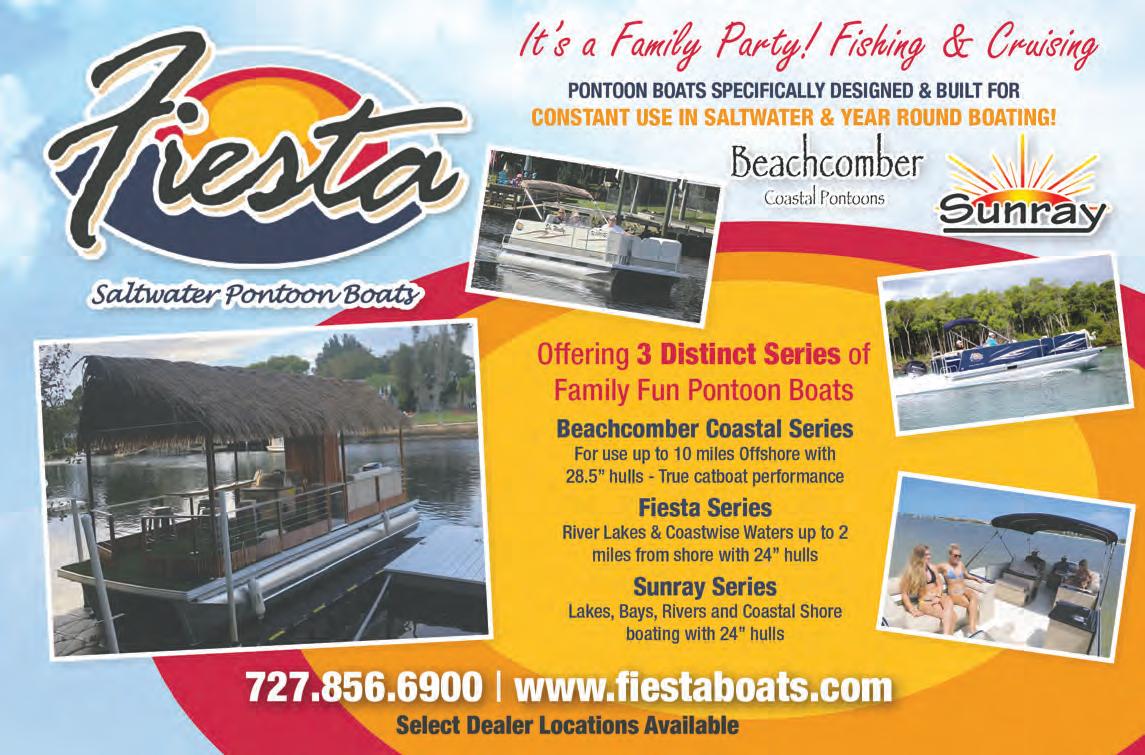


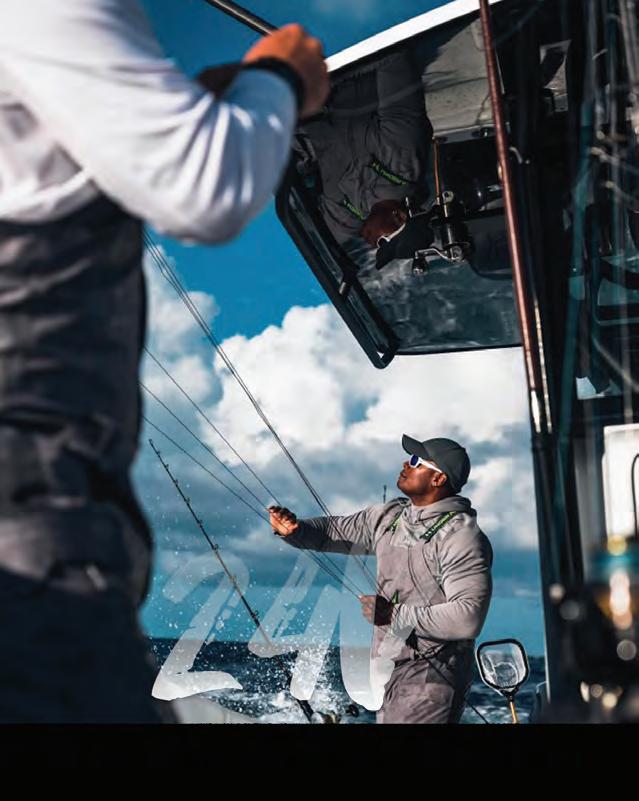







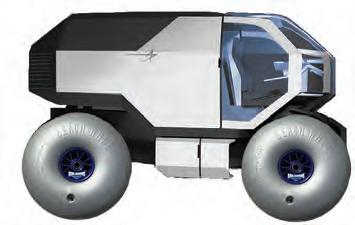





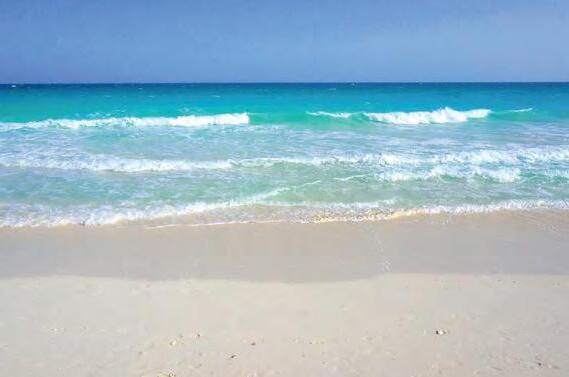



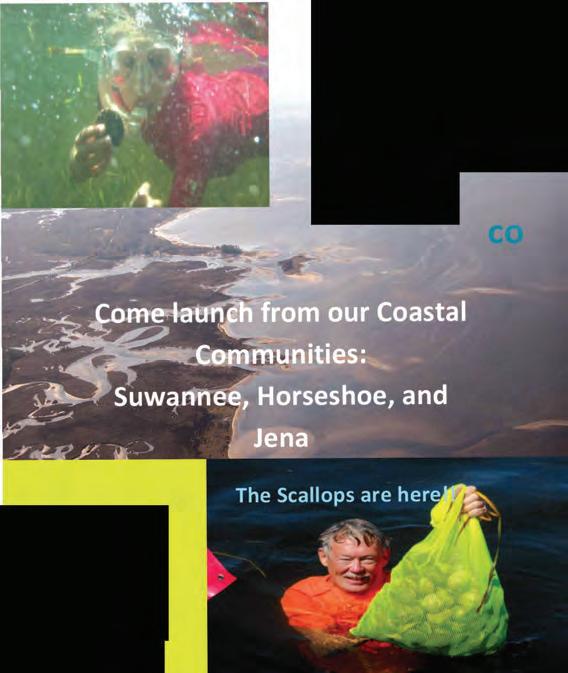
The International Game Fish Association’s (IGFA) world record database is a great source for folks who like to see some of the great sh anglers are catching around the world. Here are a handful of catches recently approved for the record books. For more world records, visit the IGFA website at igfa.org.
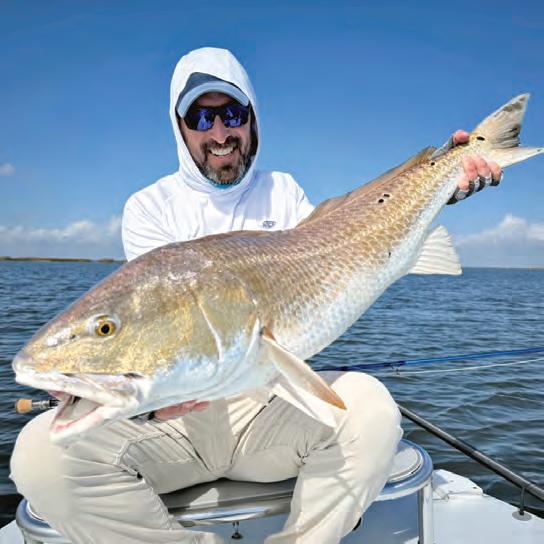


On November 11, 2024, Earl Gill IV was shing aboard the Excel captained by Justin Fleck when he landed this massive 443-pound yellow n tuna. With this sh, Earl has set the IGFA All-Tackle World Record as well as the IGFA Men’s 60-kg (130 lb.) Line Class World Record for the species, surpassing the previous records by 16 pounds! !e Excel was shing the Lower Banks o Mexico when this record yellow n struck Earl’s cut bait. A$er an intense 1 hour and 45-minute ght, the crew was able to ga the tuna and bring it aboard.

On February 9, 2025, Graig L. Hale was shing the backwaters near Port Sulphur, Louisiana, when he landed a 37.4-inch (95 cm) red drum—tying the IGFA All-Tackle Length Fly World Record for the species. !e record red sh ate a crab &y while Graig was shing with Capt. Scott MacCalla, making for an unforgettable day on the water. A$er boating the sh, Graig was able to record the length on his O cial IGFA Measuring Device before releasing the sh safely.

Pamela Moss was shing on Lake Lanier in Georgia on February 10, 2025, when she landed this 9-pound, 5-ounce landlocked striped bass. With this sh, Pam has set the IGFA Women’s 4-kg (8 lb.) Tippet Class World Record for the species. She was shing with guide Dillon Lancaster when she landed this record sh. She released the sh safely a$er recording the weight on her certi ed scale.
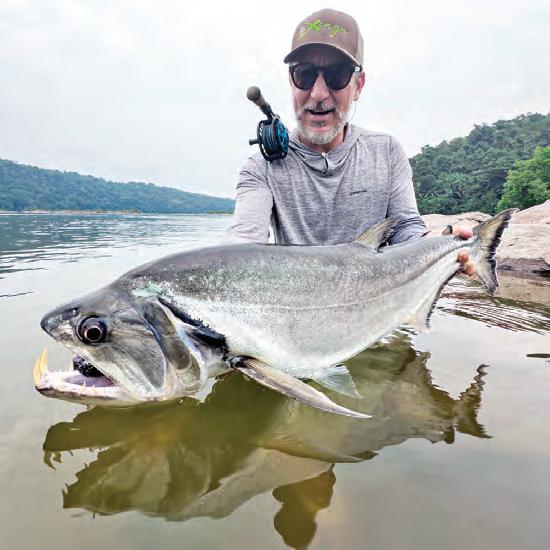
On November 22, 2024, IGFA Representative and multiple World Record holder, Rodrigo Salles, was shing the Rio Xingu in Brazil when he landed this 33.07-inch (84 cm) payara. With this sh, Rodrigo has set the IGFA All-Tackle Length Fly World Record for the species. Rodrigo landed the toothy payara on a black streamer &y. He was then able to record the length on his O cial IGFA Measuring Device before releasing the sh safely.

When it’s time to get on the water, your gear should be as ready as you are. Introducing the new and completely redesigned - Plano® StowAway®. Thick, pre-cut dividers make for easy box setup. More divider slots allow you to store more lures. RustrictorTM technology blocks rust and corrosion to help keep your favorite tackle rust-free. A single latch with a labeling area helps to quickly identify and access tackle on the fy. The best part? We’ve kept your favorite Plano StowAway at the same affordable price. Don’t just be kind of ready - be Plano ready.


July and August will be the hottest months of the year. !e wahoo and yellow nn will be everywhere and nowhere they should be. For example, you could go up and down the edge of the break and not nd a wahoo or a yellow n anywhere, but the guy slow trolling a menhaden for king mackerel 10 miles o# the beach catches a 100-pound wahoo or the guy 30 miles o# the beach light lining a pin sh while bottom shing catches a 50-pound yellow n. None of it makes any sense this time of the year, except one thing... nd the bait, nd the sh. !e same thing applies to bottom shing. !is is the time of year to search for big stacks of bee liners, cigar minnows, and sardines. Keep an eye on the recorder when you’re running to wherever you’re going, and if you see a big stack of bait on the surface, take a minute to check it out. If that stack of bait happens to be near pretty bottom, there’s a good chance it’s a good place to sh. !is is the time of year when it is especially productive to jig live cigars and sardines and put them back out.
whatever you want to, but stay focused on the bottom. Always keep a pitch rod handy with a live cigar, mina or sardine on a small circle hook and $ourocarbon. You never know when a sail sh will swim by the boat. When it does happen, remain calm do not go screaming and running around the deck because, chances are, you will spook the sh and not get another shot presenting a bait to it. If you’re very quiet, chances are a sail sh will come right back to the boat and you’ll get a shot at hand-feeding him a cig or sardine. And just like that...you’re hooked up!
It’s always a good idea to keep one person dedicated to the Sabiki. When you have big marks on the bottom or see schools of bait on the surface, just know that every one of those minnows caught on the Sabiki turns into a bite, either on the light line or on the bottom.

Of course, I have to say all of this to promote bottom shing because I do not believe in trolling. For all the sh you’re trying to catch trolling, you can hook on the light line while bottom shing. Not only that, sh are a lot more fun to catch on light tackle from an anchored-up boat rather than with trolling gear. Do I like to catch kings and dolphin on the light line? Yes. Are they my favorite sh to eat? No! Yes, they are edible, but I prefer to eat sh from the bottom. So, keep a light line out to catch and release
Needless to say, a live cig or sardine has a life expectancy on my Decoy Jig of under 10 seconds and everything eats one on the light line.
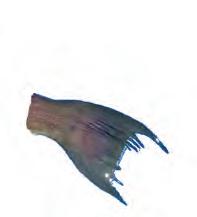
So, go to all your normal places in July and August that traditionally hold the bait, and you will most likely nd the sh. Live bait is always the best, but don’t ever leave the hill without a box or two of frozen cigar minnows. More sh have been caught on frozen cigs and sardines, than all the other baits combined. It’s never a bad idea to take live pin sh from the marina as well; the beauty live pin sh is that not everybody down there can put it in their mouth which eliminates a bunch of trash bites.
Yes, you will have to deal with catching and releasing all the “endangered” American red snappers and gag grouper, but that’s just what you’re gonna have to do until we can get this straightened out. Learn how to handle these sh properly for a successful release and come home with some good dinners.
Check out more from Tim Barefoot at barefootcatsandtackle.com.



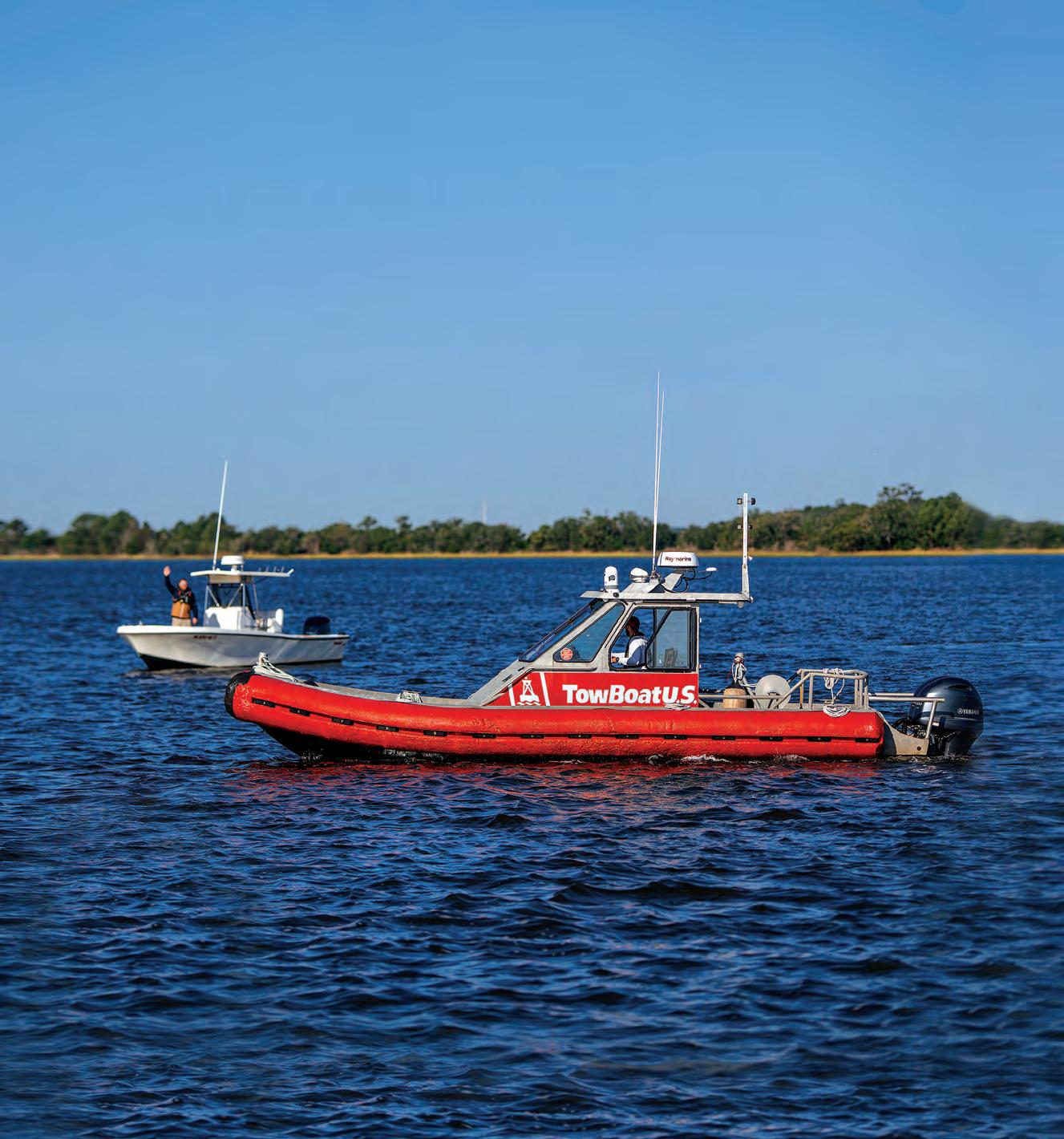
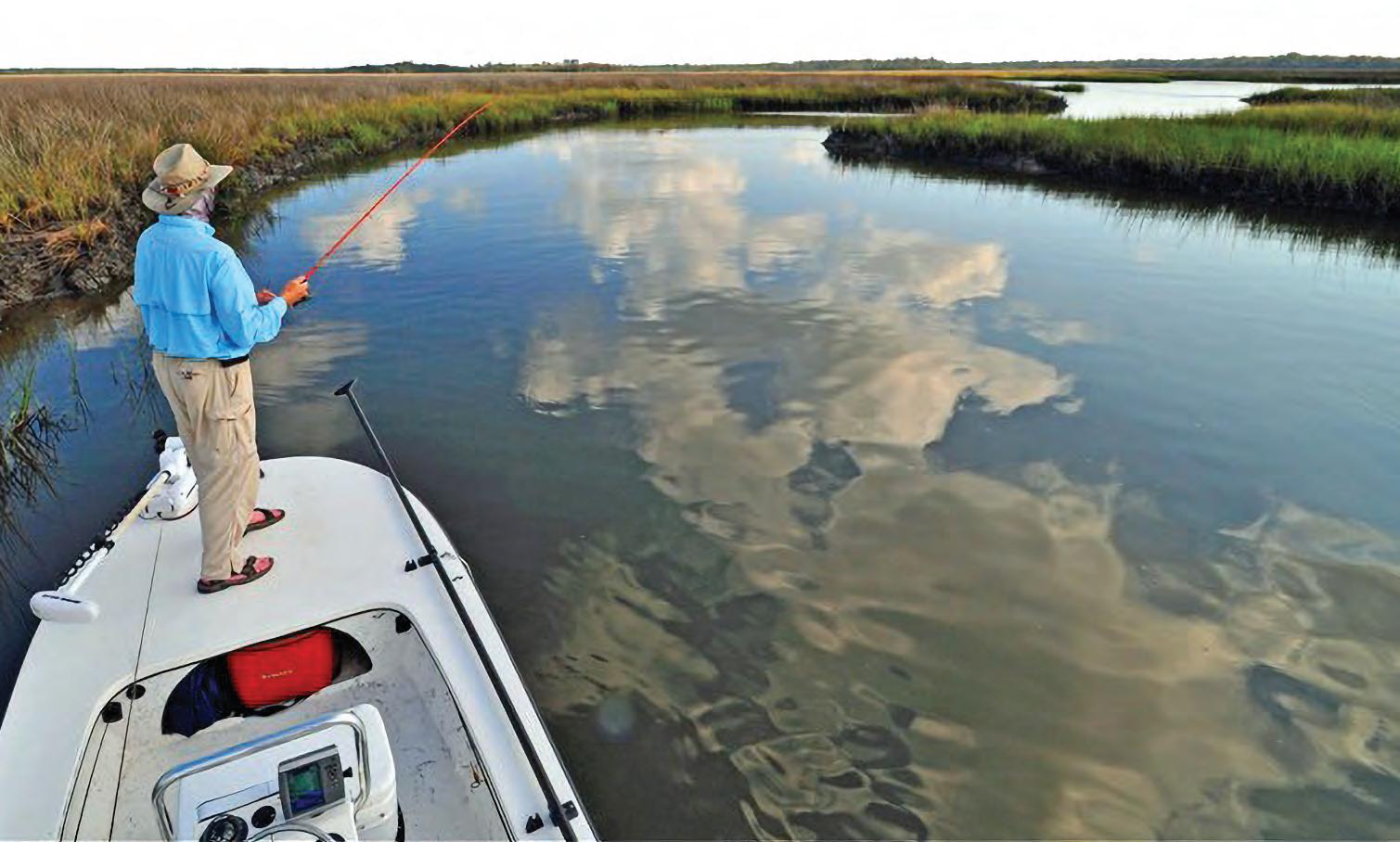
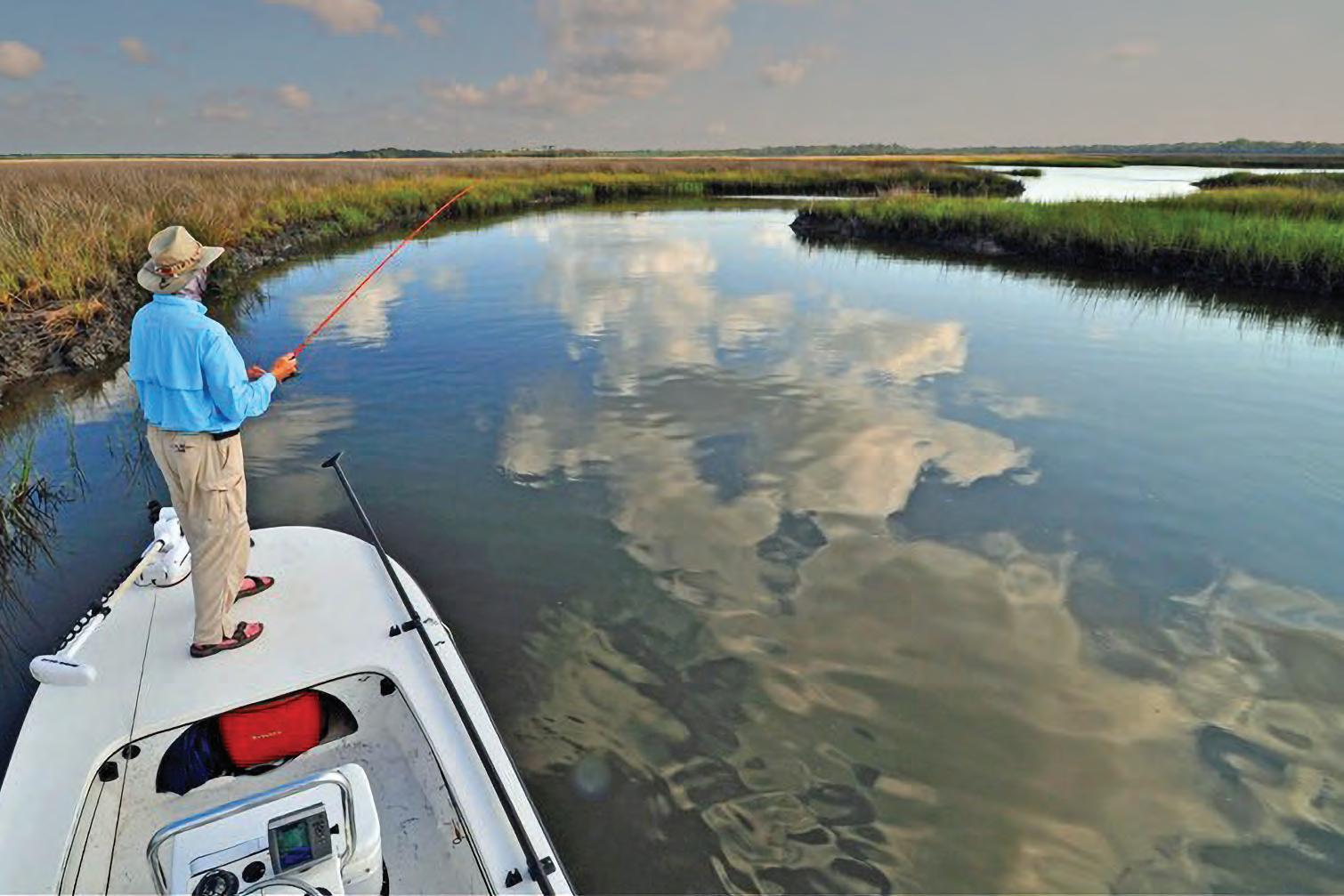




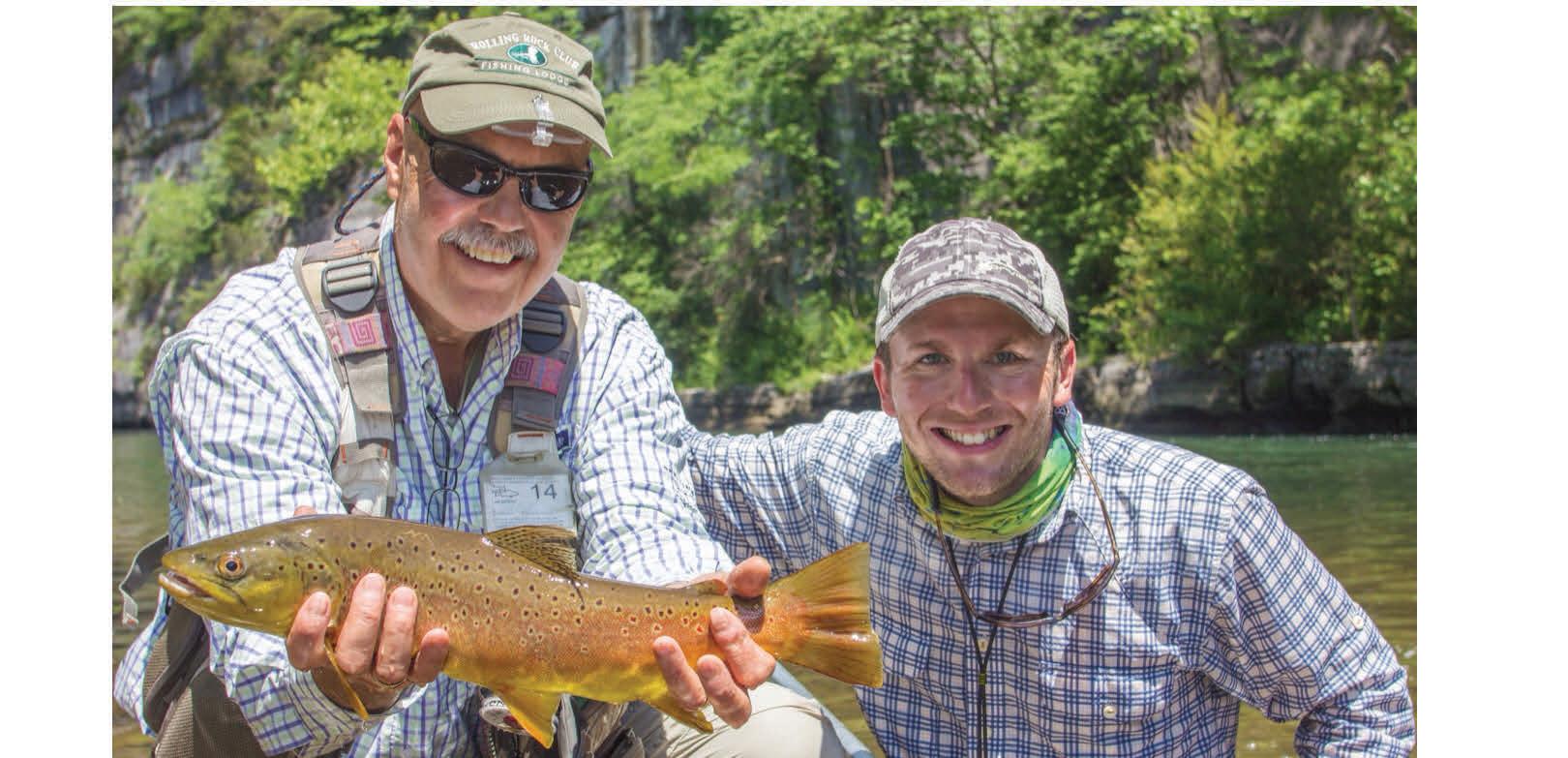




In general, the trend in boating these days is bigger is better. Right? Engine horsepower is getting higher and higher, and boats are being built able to accommodate two, four, even six engines. But what about the other end of the spectrum—anglers and cruisers that are looking for the ultimate in portable propulsion? Whether you are looking for a boost for your kayak or a reliable motor for your in$atable shing boat or tender, the perfect engine should be lightweight, easy to take on and o#, easy to use and provide the range and speed for almost any conditions. It should be selfcontained, so you don’t have to deal with lugging around a fuel tank, or even have to purchase and safely store gasoline on your boat.
Electric propulsion is the way to go, but no one has really gotten the

converters, the eLite can be fully charged in around four hours. For added capability and convenience, the engine includes a USB-C output that allows users to charge and power other electrical devices. At just under three-feet in length and weighing 14.7-pounds including the built-in battery, the eLite stores easily and the one-click quick-release bracket allows for installation and removal in a matter of seconds. For exceptional portability, the tiller handle converts to a perfectly balanced carry handle. With multiple trim and tilt angles, adjustable steering resistance and sha length, and a shallow-water mode, the eLite is completely customizable. Its Smart Battery Monitoring System e%ciently optimizes performance, carefully regulating battery level, temperature, and remaining state-of-charge all displayed on an ultra-simple interface, leading to extended range, a more energy-e%cient operation and longer battery life. Built to last, it is IP67 waterproof, and is constructed of aviationgrade aluminum alloy for lighter weight and greater durability. In addition, the anti-ground auto kick-up feature protects the motor from accidental damage. Available for under $1,000, it is also the most a#ordable electric outboard in its class.
!ere’s no time like today to upgrade to the electric outboard of the future. !e ePropulsion eLite is in stock and ready to take you quietly and sustainably to your next adventure.






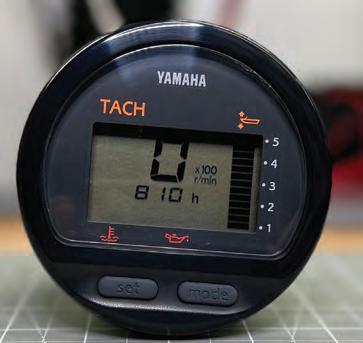



TYLER WOOLCOTT

Most of the time the saying is true, bigger bait equals a bigger sh! Although elephants eat peanuts, a big bait pro le is something sh can’t resist no matter if you are shing the open ocean or the Great Lakes. I have spent a lot of time over the last few years throwing baits bigger than my old “comfort zone” sizes for bass and it is pretty special what gets curious to come look or bite them.
!ere are many di#erent types of swimbaits out on the market, but I’ll break them down into two for this article to keep it simple. You have the hard, gliding-style treble hook swimbaits, or you have so body swimbaits that is more of a steady slow reel and most of the time more weedless. !ey both have an awesome time and place to get thrown and will both attract some very big sh.
Depending on where you are in the country and the size of the forage in your lake, a normal meal for a bass is usually much bigger than you think. A 6- to 8-inch bluegill is something a two or three pound bass would have no issues at all with swallowing and eating it whole. A 10+ pounder, on the other hand, could eat bait sh such as gizzard shad up to 14 inches, which I have personally seen. Trying to exactly duplicate the larger bait sh that are in your lake in a natural presentation is the absolute best way to draw attention from sh to your arti cial lure.
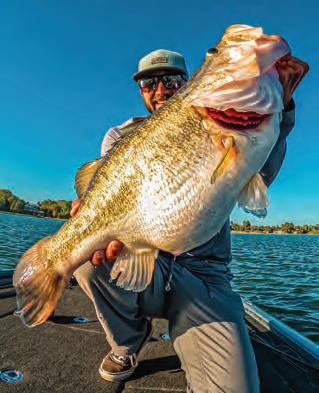
Most of the time when I am throwing a gliding-style hard swimbait, my rst choice is always going to be a shad imitation. A majority of the
places I sh are full of shad and this seems to be a favorite food source for bass when available to them. Another major large food source for big bass that a lot of people forget about are crappie. I have personally witnessed some absolute giant bass in multiple lakes that feed primarily on crappie. When throwing so swimbaits my go-to imitation is typically a bluegill. Usually when I’m throwing a so swimbait I’m wanting to either creep it through grass or along the bottom, which calls for a more weedless rig. Both places bluegill typically live and the bass that feed on them aren’t usually too far away. !ere are many di#erent brands of swimbaits out there, hard and so . When rst starting out I would stick to some of the a#ordable baits that have good reviews by users and are proven to work until you build up your con dence, then start working your way up to bigger and more customized things.
When throwing bigger lures like swimbaits you typically want bigger equipment to throw them. 13 Fishing makes an awesome, very a#ordable 8-foot rod in their Defy series that can handle most swimbaits I throw. Pair this up with a 300 sized reel like the 13 Fishing Concept A3 and some 20-25 lb. Su x Advanced Fluorocarbon and you are ready to go battle with some big sh!
It’s hard to t all the info needed to explain this technique in this article, but I hope it sparks your interest to get out there and throw a big bait. !e best way to learn is to get on the water and give it a try for yourself! I tried it once and now it is one of the coolest and most fun ways I target big bass all year long.
Don’t be afraid to reach out via my website or social media platforms with any questions you may have!
Good luck out there and tight lines!
Tyler Woolcott is a professional tournament angler and guide. Check out his website at www.tylerwoolcott shing.com.


Weighing just 30 pounds, the portable and versatile DF 2.5HP outboard motor is the lightest Suzuki 4-stroke motor ever built. This smooth and quiet engine is water-cooled for increased dependability, features a digital CDI, and its anti corrosion system ensures the aluminum propeller stays durable in marine conditions. Steering and throttle tension and control are easily adjustable. Simple steering action for maneuvering in tight quarters. Easy-to-grip carrying handle conveniently tilts the motor up when needed. Meets the rigorous EPA 2010 and CARB 3-Star Ultra-Low emissions standards.

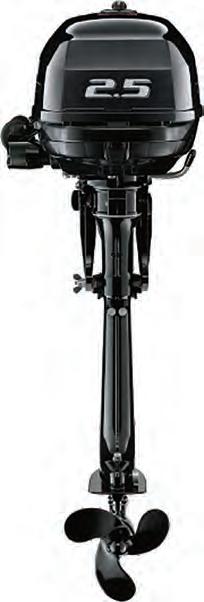

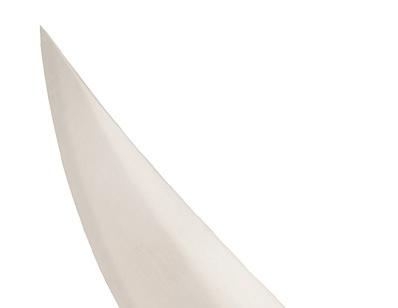
Three knives. ONE amazing price! Originally $249. Limited time special offer ONLY $69!

When you use your INSIDER OFFER CODE


— D., Houston, Texas TAKE 72% OFF INSTANTLY!
Looking for a knife that’s a cut above? We can do you two better. The Triple Play Knife Collection gives you three different styles of hunting blades for one unbelievably amazing price of just $69. Because serious hunters know that sometimes one knife isn’t enough, and so do serious collectors. All three blades in the Triple Play Knife Collection are made with genuine 440A stainless steel and measure an impressive 52-58 on the Rockwell scale for hardness. There’s the reliable lockback blade, designed to open up and never let you down. The two-blade trapper knife, engineered for those who trap small game, and a solid, simple, fine fixed blade measuring 9" in overall length, and the antler-textured handles on every knife complete the expert hunter look.


With all three blades along with a decorative display box priced at just $69, this is some big collectible prey worth hunting down. This deal truly is a cut above.

Satisfaction Guaranteed or Your Money Back. Try out the Triple Play Knife Collection for 30 days. If it doesn't make the cut, send it back for a full refund of the item price. Limited Reserves. We only have 850 available for this ad only at this incredible price. Call today!
What customers are saying about Stauer knives...
“First off, the shipping was fast and the quality is beyond what I paid for the knife. Overall I am a satisfied customer!”
Triple Play Knife Collection $249* Offer Code Price Only $69 + S&P Save $180
Your Insider Offer Code: TPK238-01
You must use the insider offer code to get our special price.

14091 Southcross Drive W., Dept. TPK238-01
Burnsville, Minnesota 55337 www.stauer.com
*Discount is only for customers who use the offer code versus the listed original Stauer.com price.
Rating of A+ California residents, please call 1-800-333-2045 regarding Proposition 65 regulations before purchasing this product.

• 3-piece set: 9" overall fixed knife with 5" blade; 4 ¹⁄8" trapper knife with two 3 ³⁄8" blades; 4" overall lockback knife with 3" blade • Stainless steel blades with antler patterned resin handle • Comes in decorative display box
Stauer… Afford the Extraordinary .®
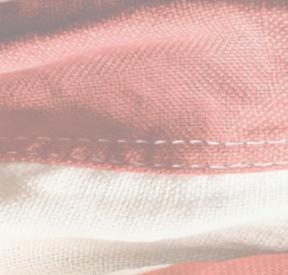















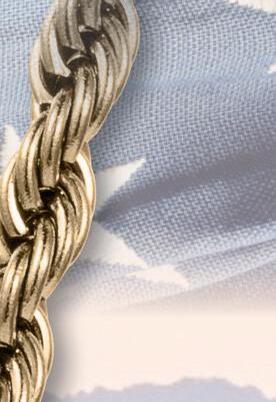




Troughout history, the eagle and the anchor have stood as enduring symbols of power and resolve. Te eagle, with its mighty wings and piercing gaze, has long been a representation of freedom and bravery, soaring high above, ever watchful and unyielding. Te anchor, frmly rooted, embodies stability and steadfastness, grounding even the fercest storms. Together, these two symbols have come to represent those who serve with honor - those who rise to meet any challenge, yet remain rooted in integrity.








Inspired by this profound symbolism, the Wings of Honor pendant brings together the soaring spirit of the eagle and the enduring strength of the anchor in one stunning design. Crafed from premium stainless steel and fnished with a luxurious 18k gold coating, this pendant is not just a piece of jewelry - it’s a tribute to the values that have defned generations of heroes.










Te Wings of Honor pendant is a statement piece that speaks to the legacy of all who wear it. Whether as a gif for yourself or for someone whose story is woven with honor and valor, this pendant carries a deep sense of pride.




And now, this remarkable symbol of strength can be yours for an incredible price - just $39 plus S&H. By using the special code CA5WHP, you can secure this timeless piece, saving you more than you’d expect for such crafsmanship.
A lasting reminder of bravery and commitment, the Wings of Honor pendant connects the wearer to the rich heritage of those who stand for both freedom and stability. It is more than an accessory - it’s a refection of the values we hold close, ready to be passed from one generation to the next. Claim yours today, and wear your story with pride.










Wings of Honor Gold & Steel Pendant - $149 $39 - Save $110








$39 Special Offer







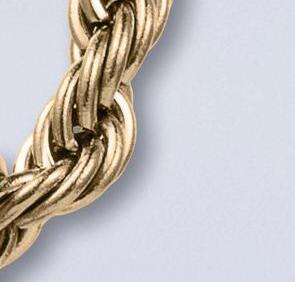










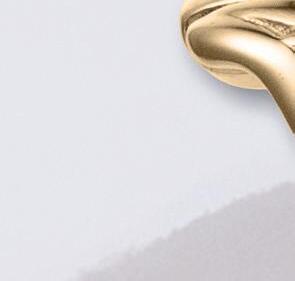
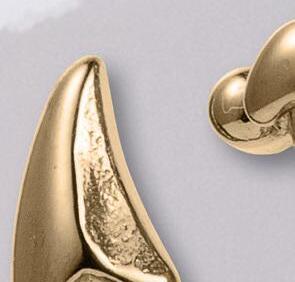




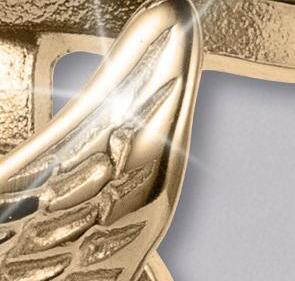







* Exclusive Ofer Price Using Discount Code Pendant & 24” 18k Gold Plated Rope Chain - $278 $59 - Save $219





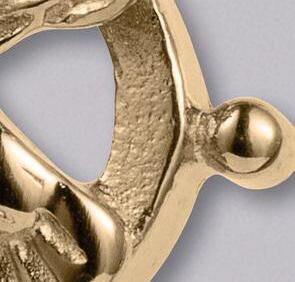

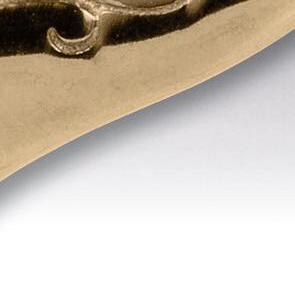

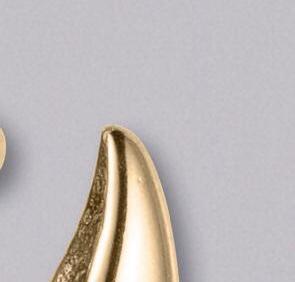


“No bird soars too high if he soars with his own wings”
- William Blake, English poet














Whether you’re fishing from a paddleboard, kayak, canoe or small boat, the ePropulsion eLite 500W redefines your on-water experience with innovative features and commitment to sustainability. Designed to be the most compact and lightweight electric outboard in its class, the eLite is an easy-to-use alternative to small internal combustion engines for enthusiasts worldwide. Max 5.6 miles at half throttle and 3.5 miles at full throttle.




